Recent Fire Damage Posts
Experience Complete Recovery with Fire Damage Repair and Restoration in Winter Park
8/6/2024 (Permalink)
Experiencing a fire can be life-altering. The aftermath of such a disaster leaves more than just physical damage—it leaves emotional scars and a sense of loss. At SERVPRO®, our mission is to guide you through this challenging time with comprehensive fire damage repair and restoration services that help you rebuild your property and restore your peace of mind.
Rebuilding Stronger, Together
SERVPRO of Winter Park is dedicated to providing top-tier fire damage repair and restoration services. Using advanced techniques, cutting-edge equipment, and a compassionate approach, we aim to not only restore your property but also rejuvenate your spirit.
Comprehensive Fire Damage Repair Services
The path to recovery from fire damage begins with a thorough assessment. At SERVPRO of Winter Park, our team of experts conducts a meticulous inspection to determine the extent of the damage and create a customized restoration plan. Our comprehensive fire damage repair and restoration in Winter Park includes:
- Structural repairs to ensure safety
- Smoke and soot removal from all surfaces
- Deep cleaning and sanitization of belongings
- Odor elimination using advanced equipment
- Complete property restoration and reconstruction
Our goal is to address every aspect of fire damage, ensuring that your property is safe, clean, and habitable once again.
The Necessity of Professional Fire Damage Restoration
Fire damage brings with it a host of complications, from hazardous soot and smoke residues to water damage from firefighting efforts. Handling fire damage on your own could lead to further issues and health risks. Therefore, engaging professional fire damage repair and restoration services is crucial. SERVPRO of Winter Park employs certified professionals who follow stringent protocols to ensure effective and safe restoration. Our services encompass:
- Immediate assessment and stabilization
- Specialized cleaning techniques and products
- Heavy-duty equipment for odor and soot removal
- Restoration of personal belongings
- Comprehensive rebuild services
With our expertise, we manage every step, minimizing disruption and stress, while maximizing the efficiency and effectiveness of the restoration process.
A Commitment to Excellence and Compassion
At SERVPRO of Winter Park, we understand that each fire damage incident is unique and deeply personal. Hence, our team prioritizes open communication, empathy, and individualized service. We work with you every step of the way, from emergency response to full restoration and insurance claim processing. Our commitment goes beyond physical repair; we strive to offer emotional support and assurance during this difficult time.
Choosing SERVPRO for fire damage repair and restoration in Winter Park means choosing a partner dedicated to your complete recovery. Our trained professionals handle each project with care and precision, ensuring you and your property receive the best possible treatment.
Call to Action
Facing fire damage is overwhelming, but you don't have to face it alone. Trust the experts at SERVPRO of Winter Park for your fire damage repair and restoration needs. Contact us today and let us help you through the road to recovery.
Reach out to SERVPRO of Winter Park now and experience professional, compassionate fire damage repair and restoration.
By following this structured format and utilizing the essential elements, this comprehensive blog post provides detailed information on SERVPRO’s fire damage repair and restoration services in Winter Park, emphasizing their commitment and professional expertise in helping the community recover.
How to Eliminate Smoke Smell in Your Orlando Home
6/13/2022 (Permalink)
 Eliminating a smoke smell can be challenging because the smell is usually embedded in your furniture, walls, and other things that survived the fire.
Eliminating a smoke smell can be challenging because the smell is usually embedded in your furniture, walls, and other things that survived the fire.
A fire disaster in a home has immediate and long-lasting effects. Some immediate ones include loss of property or injuries to the people in the house. After cleaning, however, you will deal with the smoke smell for a longer time.
Eliminating the smell can be challenging because the smell is usually embedded in your furniture, walls, and other things that survived the fire. Some of the tips you can use to eliminate the smell include:
Air it out
This is the first and most crucial step when eliminating smoke in your Orlando home. Open all windows and doors, then turn on your fans to full blast. This will encourage fresh airflow into your home.
It would help if you also used positive pressure, which reduces the air pressure inside the house, encouraging more fresh air from outside to flow in. to use this method:
- Open your front door and place a fan outside facing the house
- Close all other doors and windows except one that acts as a ventilator
- Turn your fan on to full blast, let it run for 15 minutes, then close the open door and window
- Do this for every room until you can’t notice the difference between outside and inside air
Clean the home
Clean your walls, furniture, decks, windows, and other surfaces of your home with mild soap or other cleaning solutions. Ensure you also wash inside the closets, cabinets, and drawers.
Some of the things you can use to clean include:
- Baking soda- This is a natural odor-absorber that you should sprinkle on your carpet, floors, and furniture and use a brush to work it in the fabric. Leave it for a few hours or overnight, then vacuum it out. Do this as many times as you feel necessary.
- Vinegar- This is also a natural odor neutralizer you should use to wipe your washable walls, furniture, floors, and other surfaces. You can also have a jar of vinegar in the room and add some lavender if you don't like the smell of vinegar.
- Activated charcoal- Place a bowl of powdered activated charcoal in the house for a few days to help absorb the smell.
- Febreeze- This is an odor-reducing agent you can find in many shops. Spray a good amount of Febreeze around the room and leave it for a few days.
You should also clean all your clothes, bedding, curtains, and drapes. Add your regular cleaning detergent and a little vinegar to help eliminate the smell. Finally, have your HVAC unit and ducts cleaned to remove smoke residue and soot.
Call the professionals
While cleaning and airing your Orlando home will help remove the smell, sometimes you can't eliminate it completely, especially if the fire was extensive. For the best results, contact professionals who have different commercial cleaning products to thoroughly clean all surfaces and eliminate even the small traces of smoke.
When looking for an Orlando company, consider their experience, skills, credentials, customer service, plus reviews and ratings.
Conclusion
Eliminating the smell of smoke from your Orlando home after a fire disaster is challenging and traumatizing. You can try eliminating the odor by airing your home and cleaning the surfaces, but the best shot is to call the professionals. Calling the professionals will also save you money, time, and effort in the long run.
What are Puff Back Fires and How Can They Happen?
5/31/2022 (Permalink)
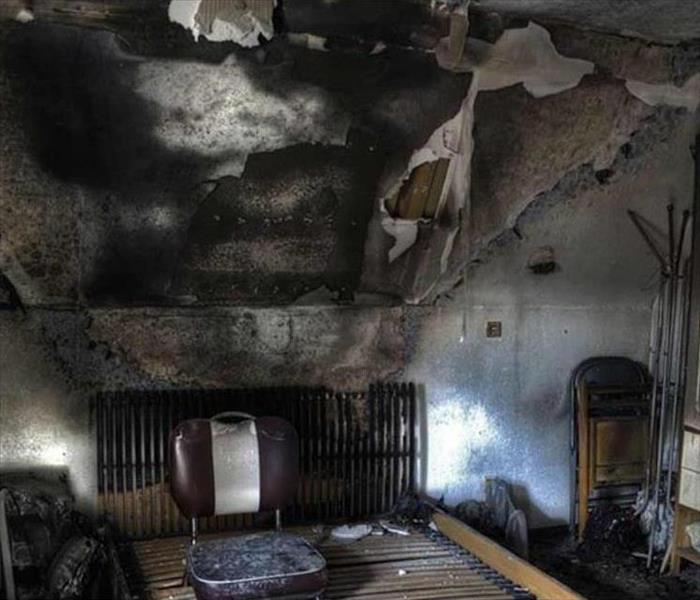 Puff back fires happen when your oil burner is running and the product of combustion, natural gas, is released into the air.
Puff back fires happen when your oil burner is running and the product of combustion, natural gas, is released into the air.
Puff back fires happen when your oil burner is running and the product of combustion, natural gas, is released into the air. It can occur when a burner's hot exhaust pipe comes into contact with combustible materials like dry leaves or even just water vapor that already exists in the air. The fire burns through these materials, releasing more heat and gases into the atmosphere and causing a massive explosion that disrupts your heating system.
Causes of a Puff Back Fires
There are several causes of puff backfires. The following are some of them:
Burner is clogged
The most common cause is a clogged burner. It's imperative to check your burners regularly, more than once a month, especially when it's cold outside. If your burner has formed a clog and you don't remove it, your system will not run as efficiently, and the chances of puff backfire increase.
Improper combustion
Another common cause of puff backfires is improper combustion. It occurs when there's not enough air or too much air is being fed into your burner. You must keep the burning process in a particular state to prevent the fire from overly combusting, which can cause a puff to backfire.
Chimney is clogged
There are many ways for a chimney to become clogged, but one of the most common is when too much ash builds up in the bottom. It is caused by an inefficient combustion process in your burner, which results in excessive ash being left over.
Low oxygen levels
Another cause of puff backfires is having too low oxygen levels in your air supply. When oxygen levels are too low, your combustion process cannot burn properly, and a puff will occur. Most boilers or furnaces have a mechanism that detects low oxygen levels and will shut off the device to prevent a fire, but you must check the levels yourself.
Gas leaks
Gas is not very compressible, and when it leaks into the air, it causes an increase in pressure which results in a puff backfire. It is most likely caused by the leak coming from your gas pipe. It could be the result of poor installation or poor maintenance.
Safety Measures
Proper installation and maintenance
You have to have a burner that is properly installed and maintained to avoid puff backfires. The best way to do this is to have a professional install your system because they are better trained. It will also reduce the chances that you have a gas leak or a clogged burner.
Reduce combustible materials
You should decrease the amount of combustible materials around your home. It would help keep your yard neat and tidy to avoid getting a puff to backfire from dry leaves and dead branches.
Proper ventilation
Another preventive measure is to have proper ventilation when using your fireplace or heating system. You should keep the windows open if you are in a room with an operating fireplace. It's also a good idea to keep an exhaust fan on while your system is running.
Use of safety shut-offs
You can also have a safety shut-off installed on your system. It will shut down the oil burner in case of low oxygen levels or a clogged chimney.
Puff back fires are very dangerous and can cause a lot of damage to your home. They are also preventable if you take the proper precautions. There are several reasonable safety measures that you can take, but it's best to have a professional come in and inspect your system if you have any doubts.
Winter Heating Safety in Florida
5/20/2022 (Permalink)
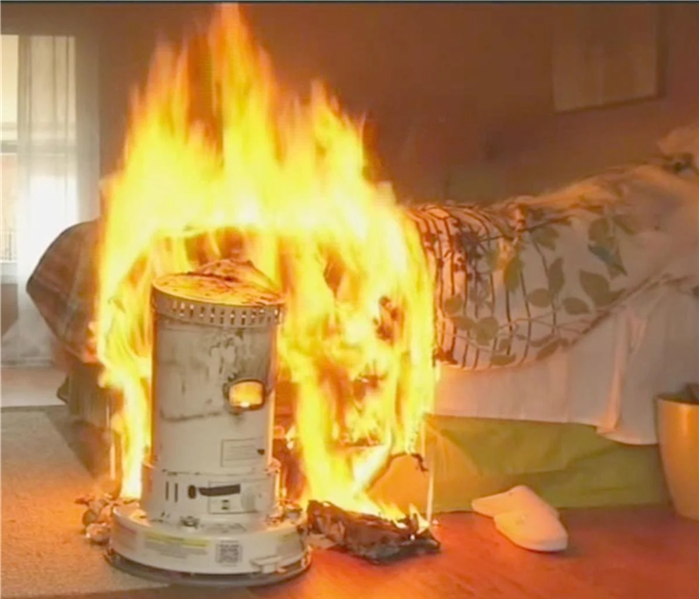 A space heater needs to be three feet away from everything else. It can burn up anything that is close to it.
A space heater needs to be three feet away from everything else. It can burn up anything that is close to it.
Staying Safe with Different Heating Systems
Although we are a ways off from being worried about staying warm here in Florida, we also believe in informing our readers ahead of time so they can be best prepared. That brings us to this post about home heating systems. There are several winter heating systems that can keep your home warm during the winter. However, safety is the most important thing that you have to keep in mind. You need to do the following in order to ensure that you safely heat your home.
Space Heater
People love space heaters because they are efficient and do not take up a lot of space. You will instantly feel the heat when you turn it on. However, there are a number of hazards that are associated with using a space heater.
You need to put your space heater in the right place. The space heater needs to be three feet away from everything else. It can burn up anything that is close to it. Keep in mind that some space heaters have temperatures that can exceed 100 degrees Fahrenheit.
You should not put a space heater on carpet. You should also avoid putting it somewhere that has heavy traffic. A space heater can easily start a fire if it is knocked over.
Open Ovens
Ovens are great for baking good food. Many people also use their ovens to warm their home. However, it is a bad idea for you to keep your oven if you plan on leaving the house. An oven cannot efficiently heat your entire home. It can only heat the surrounding area.
If you have children or pets, then leaving an oven open can cause them to get injured. Additionally, there is a possibility that your oven can cause carbon monoxide poisoning. That is why it is important for you to maintain your oven.
Carbon Monoxide Poisoning
According to the CDC, 50,000 people die each year due to carbon monoxide poisoning. Carbon monoxide poisoning is most likely to occur during the winter because of carbon monoxide poisoning. You can greatly reduce your chances of suffering carbon monoxide poisoning by getting your heating system maintained.
Not only can a professional maintain your heating system, but they can also tell the temperature that is best for you to set the thermostat on. Furthermore, a professional can clear the vents. This will allow your heating system to work efficiently and safely.
Fireplace Fires
A fireplace is one of the best things that you can do to keep your home warm. It also makes your home feel cozy. However, fireplaces are a major fire hazard. You have to make sure that your fireplace does not have any residual coals or ashes.
You should clean out your fireplace every time that you use it. Put the ashes and coal in a container that is at least 10 feet away from your home. Before you use your fireplace, you should put up a screen. This will prevent the ashes from coming out of the fireplace.
You should also clean and maintain your chimney. A chimney sweep can greatly reduce the chances of a fire.
Candles
Candles are something that many people use all year long. People like using them during the winter because they create an ambiance. Fires are not the only hazards that are associated with using candles. If your candles are made out of toxic products, then you can inhale those chemicals.
It is best for you to use beeswax candles. These are natural and clean candles. They can also help clean the air by neutralizing the negative ions.
You can minimize the chances of a candle fire by keeping them away from blankets, paper and bedding. You should also avoid putting them in a place where they can easily be knocked over. Furthermore, it is important to change the HVAC filter on a regular basis. Burning candles frequently can clog up your filter.
Smoke and Soot Restoration Process Guide
5/4/2022 (Permalink)
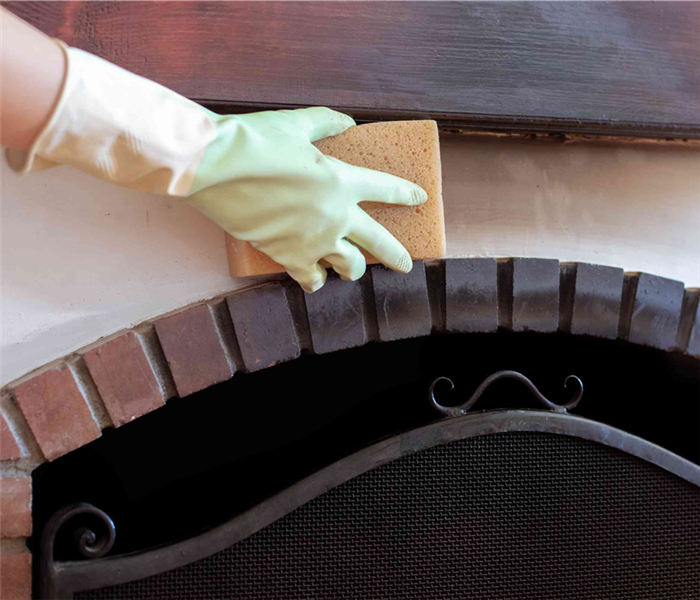 Restoration experts use dry sponges to scoop up sticky soot particles from the walls and ceilings.
Restoration experts use dry sponges to scoop up sticky soot particles from the walls and ceilings.
Fire breakouts can be tough on homeowners both emotionally and economically. The devastation after a fire outbreak can be difficult to handle, especially if there's salvageable property. The choking smoke odor and the thick layer of soot make restoration a challenging affair even for seasoned cleanup experts.
If you find yourself in this unfortunate situation, your best bet is to call a licensed fire damage cleanup company. A poor restoration process can create more residential or commercial property problems. Soot and smoke residues can further property deterioration and lower its overall salvage value. It weakens structural components and destroys electrical appliances such as HVACs. Engaging a professional fire cleanup company is the best way to ease stress and reduce further property damage.
Steps before the restoration process
A homeowner can do a few things before the cleanup team arrives at their premises.
Step 1: once the fire has died down and the premises is safe for entry, the homeowner should inspect all rooms to identify salvageable items.
Step 2: Sort out personal belongings and separate ruined items for easy disposal.
Step 3: Move the salvageable items to a safe location as you wait for the professional cleanup team's arrival.
Once the soot removal team arrives, they'll have an easier time inspecting the property for the extent of soot and smoke damage. Smoke and soot restoration
Soot and smoke restoration is a delicate exercise that's best left to experienced fire damage cleanup teams knowledgeable in handling fire disasters. These teams will carefully inspect each room to determine the extent of fire damage and what's salvageable. Some items may be damaged beyond repair and not worth the trouble of restoration. Restoration professionals can also help homeowners make accurate assessments when filing insurance claims.
Dealing with smoke damage
Even a few minutes of smoke exposure can leave large portions of your property clouded with soot. Prolonged smoke exposure can lead to permanent wall staining that is hard to reverse. Furthermore, the corrosive smoke particles can penetrate permeable structural components and weaken them.
• The smoke removal team begins the cleanup by inspecting smoke damage on ceilings, walls, and flooring.
• The team then opens all doors and windows to improve air circulation, which helps eliminate smoke odors.
• Dry cleaning may be necessary to remove smoke particles stuck on windows, ceilings, and wall surfaces.
• Next is a wet cleanup using professional cleaning products. Alternatively, you can use Vinegar, baking soda, and hot water solutions to neutralize the smoke odor.
• The restoration experts then apply a degreasing solution and scrape off stubborn smoke residues using soft-bristled brushes.
• The last step entails rinsing the surfaces with warm water.
Handling soot damage
Soot can be a major respiratory hazard, especially if some family members have preexisting respiratory complications. Poor vacuuming techniques can cause the soot to spread to unaffected surfaces.
• The cleanup team uses specialized vacuuming equipment and protective gear to soak up soot residues on the flooring.
• The restoration experts use dry sponges to scoop up sticky soot particles from the walls and ceilings. The professionals clean the soot using special overlapping techniques to prevent soot streaking.
• After the dry-sponge cleaning, the team applies a degreasing solution to eliminate soot particles from glass surfaces.
• The cleanup concludes with a baking soda and vinegar solution wipe down to neutralize residual odor.
Electronics damage
Soot and smoke particles pose a significant risk to electrical appliances. It's advisable to move quickly when dealing with soot residues if you have expensive electronics on your premises. Many electrical components contain hazardous materials that release toxins when exposed to heat or corrosive smoke particles.
When soot particles settle on electrical appliances, they reduce heat conductivity, raising the risk of overheating and a potential secondary fire breakout. It's essential to leave electrical soot cleanup to professionals to limit further component damage.
Coverwood restoration
Wood finishes tend to absorb smoke particles at a higher rate than many other materials. Coverwood restoration begins with an inspection to determine the best approach for tackling soot residues. Sometimes, applying a sealant is all that's required to neutralize smoke odor and restore the furniture.
In some cases, the restoration team may opt for sanding and refurnishing to remove the soot-coated outer layer. Wood sanding is particularly effective in restoring wooden surfaces to their original state.
Furniture & carpet cleaning
Fabric finishes are notorious for absorbing and retaining odor. While many DIY carpet cleaning options exist, sometimes it's best to go the professional route. With carpets, deep cleaning with a degreasing solution eliminates most of the odor. However, if the fire damage is too extensive or the items are low-value, you are better off replacing them than incurring the cost of salvaging the items.
Why you should hire fire damage experts
SERVPRO of Winter Park is an experienced restoration company specializing in property restoration after damaging fire outbreaks. Our cleanup teams employ sophisticated restoration techniques to lessen the emotional and financial loss of fire damage. Our professional cleanup unit uses specialized restoration equipment to get the job done swiftly and efficiently.
Below are the benefits of working with a certified fire salvage company:
• Specialized soot and smoke odor removal techniques
• Mold control using certified products
• Extensive reconstruction abilities
• Reliability in processing insurance claims
How Data Can Predict Building Fires
11/2/2021 (Permalink)
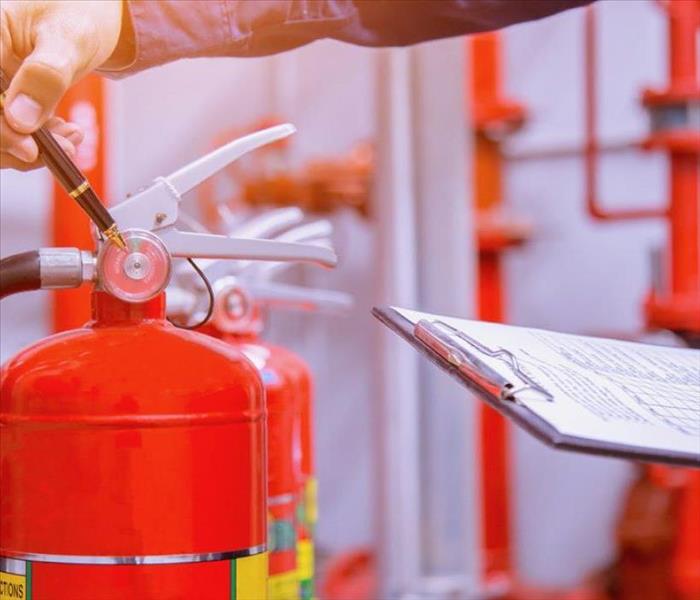 A proper evaluation of the building or structure must take place for an accurate assessment of the fire risk level.
A proper evaluation of the building or structure must take place for an accurate assessment of the fire risk level.
A fire can have a devastating impact on any building –– commercial or residential. Thus, the ability to predict building fires is more critical than ever. Fortunately, technological developments in fire research, data collection, artificial intelligence (AI), and advanced analytics have provided essential information to many industries and fields to help ensure safety.
Furthermore, data analytics not only assess fire risk but can now predict fires. This blog will explore exactly how data can help predict building fires and what fire risk assessments entail when managing fire risks for your building.
What is a Fire Risk Assessment?
A fire risk assessment is an evaluation of the different hazards that exist within a building. These risks are then prioritized based on their impact and likelihood to create hazardous conditions for occupants, visitors, or others who work in the building.
To conduct this type of analysis, you must consider multiple factors (for example, combustible materials, electrical equipment) and elements related to how fires spread, such as ventilation.
In addition to these considerations, a proper evaluation of the building or structure must take place for an accurate assessment of fire risk level and appropriate countermeasures to be put into practice.
Why is it Important for Businesses and Cities?
A fire risk assessment and analysis can help a business and city minimize the risk of fire. Moreover, if cities have various buildings with a significant risk for fire, they can take the necessary steps to correct this issue and prevent fires from occurring.
Otherwise, buildings left unprotected due to poor risk analysis can result in a major catastrophe. Surrounding businesses may even suffer damages as a result of the fire spreading. In turn, all those affected must undergo extensive repair and restoration efforts.
Business recovery after a natural disaster is often tricky and time-consuming. Thus, it's critical to ensure your facility is in good working order and free of hazards. The less opportunity you allow for danger, the better.
Data Sources in Predicting Building Fires
When it comes to predicting fire, data is the key. How can you predict building fires without understanding how these hazards form? Fortunately, various types of technological advances allow for real-time risk assessment and prediction.
Experts may use thermal cameras to detect hot spots on a structure's exterior. Additionally, since heat rises and materials can emit infrared radiation, these sensors can identify potential fire risks before they occur.
As a result, this data provides companies with vital information in managing fire prevention. The typical metrics looked at when predicting fires can include:
- Property assessments –– These assessments are necessary to understand the onsite materials and how combustible your building is. How much damage can a fire cause? How long does it take for a fire to cause significant damage?
- Fire department incident data –– Incident data is vital to understand how often fires occur in your area. How many other structures are there that could impact the environment around you? How close is a fire station? All vital information to know.
- Census data –– Census data helps better understand fire risk by looking at the demographics in your area. The data prepare fire departments for higher-risk areas and determines how prepared they are in an emergency.
- Building fire flow calculations –– These calculations show how fast a fire will travel from one point to another. Additionally, it shows how long it takes for firefighters to get there and how much time they have to contain the fire before it reaches a certain point.
- Land/building use –– How is the land being used? How much space is there between buildings? How close to fuel sources are you located? All important questions that need answers when assessing fire risk.
- Zoning –– Zoning tells risk assessors how much exposure a building has. This includes how far the fire can spread, how close it is to other facilities, how many escape routes there are, and more.
- Crime –– Fire risk assessors look at crime to determine the risk for fire from arson.
Managing Fire Risks for Your Building
Managing fire risks in your building is relatively simple yet crucial. There are several strategies you can use to keep your business and employees safe, including:
- Properly install fire alarms –– Proper installment of fire alarms is key. The number of detectors, their placement, and testing frequency will all have an impact on your level of safety and security.
- Install sprinklers –– Sprinkler systems should be installed on every level of a building. Additionally, the alarms need to be tested regularly to ensure that each is working correctly.
- Eliminate fire hazards –– Be sure to eliminate all potential fire hazards. This includes items that are combustible or have the ability to start fires.
- Have an evacuation strategy –– The best way to stay safe is by forming a fire evacuation plan effectively and efficiently ahead of time. Make a note of how many people can escape, fire exits available, and the time it will take to evacuate everyone. These are important to know as they can save lives.
- Maintain fire safety equipment –– Maintaining fire safety equipment is of the utmost importance. It ensures that fire alarms are working correctly, sprinkler systems work when needed, and allow maximum protection in an emergency. Additionally, in the event of a fire, it's crucial to have the equipment and tools used for fire restoration to help quickly clean up the contaminated scene.
- Train your employees –– Train employees on how to handle an emergency. For example, how will they evacuate, where will they go, and the best way to stay safe? You can never be too prepared when it comes to emergencies.
- Conduct routine fire drills –– Your employees and clients should be required to conduct a fire drill regularly. How often will depend largely on the size of your building, but drills should happen at least once a month. This will help your employees know how to react during an emergency, and it provides you with the opportunity to review evacuation plans and fire safety equipment.
- Post clear exits and escape routes –– Make sure there are clear signs of where to go and what rooms can be used as exits. This will help ensure that everyone can get out of the building safely.
- Schedule routine equipment maintenance –– Make sure that all fire safety equipment is always up to date. How often you need maintenance will depend on the type of equipment, but it should be done regularly.
Despite your best efforts, emergencies and accidents can still happen. It’s critical to have fire clean-up assistance for your belongings, should you ever experience fire damage. With the help of fire and smoke damage restoration experts, your building can be back to its original state in no time.
Fire risk assessment is an integral part of protecting your building or business from potential fires. With the help of data, fire risk assessors can determine how to better protect your building and keep everyone safe.
Orlando Apartment Grilling Rules and Safety Tips
9/9/2021 (Permalink)
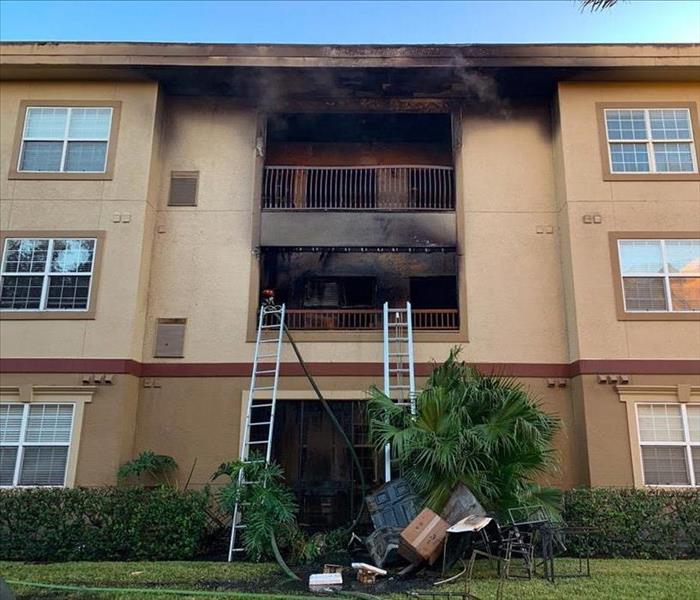 According to the Florida Fire Prevention Code, all apartment and condominium owners are prohibited from cooking on their balconies.
According to the Florida Fire Prevention Code, all apartment and condominium owners are prohibited from cooking on their balconies.
Rules and Safety Practices for Using a Grill for Orlando Apartment Owners
Grilling is a fun activity that will surely make the day for your family and friends. As a resident of Orlando, FL, grilling might be a hobby for you, and, likely, you can't get over the thought of having burgers and seasoned meats chops sizzling on your grill. However, you must exercise caution while grilling as it can also be dangerous.
According to data from the National Fire Protection Association, grilling activities were the cause of about 10,200 home fires annually between 2013 and 2017. The fire risk is heightened for apartment homeowners compared to single-family homeowners due to the limited space available for grilling. Here are some rules and safety practices for using a grill for apartment owners in Orlando, FL, that you should observe.
1. Cooking on Balconies
Apartments with balconies are highly sought after in Florida. This is because a balcony provides ample and much-desired outdoor space to a homeowner. The general rule of thumbs is that the larger the balcony, the better off you are. However, according to the Florida Fire Prevention Code, all apartment and condominium owners are prohibited from cooking on their balconies. The only exception granted is for those who wish to cook using electric appliances. As a grilling enthusiast, this means that you are not allowed to use a charcoal grill or a gas grill, and you can only use an electric grill.
2. Using Charcoal and Gas Grills
The fact that you are prohibited from using charcoal and gas grills doesn't mean that you can't grill as an apartment or condominium owner. The fire safety code outlines that you can grill on your charcoal or gas grill on the ground level at a distance of at least 15 feet from the apartment or condominium structure. Therefore, if your apartment has a large enough front or back utility area, you are free to grill from there using a charcoal or gas grill as long as you are set up at least 15 feet from the structure.
3. Storing Gas Grills and LPG Tanks
If you plan to set up your gas grill on the front or back utility area of your apartment, you should also be thinking of where you will be storing the gas grill and the LPG tank. This is because the Florida Fire Prevention Code also forbids keeping gas grills and LPG tanks that can hold quantities above 1 pound in apartments and condominiums beyond the first floor. Therefore you will have to arrange storage for your gas grill and LPG tanks on the ground or first floor.
What If You Fail to Comply with These Fire Prevention Codes?
It's best that you comply with the Florida Fire Prevention Code for your safety and that of your neighbors. Your home might be among your most valuable investments, and losing it in a preventable fire can be devastating. Beyond property damage, there is also the risk of loss of life. If you fail to comply with these fire prevention codes, you will likely face stiff legal punishments.
A. The law stipulates that the Florida Fire Prevention Code violators be prosecuted similarly to those who have committed misdemeanor offenses. If found guilty in the court of law, you will be liable to paying a $500 fine or serving imprisonment for a period not exceeding two months, or both.
B. Additionally, the state and county fire inspectors are authorized to issue civil citations to those who breach the Florida Fire Prevention Code. Each citation carries a penalty of $50 plus $8 court fees if it's not contested. If you decide to contest a citation and you lose, you will pay a penalty of $500 plus the related court costs for every violation.
C. If you contravene the Florida Fire Prevention Code and cause a fire that damages property and causes injury or death of persons, your will be facing much harsher punishment. This is because your violation just graduated from a misdemeanor to a felony crime that can carry years or decades of imprisonment if convicted.
Additional apartment grilling safety practices
4. Keep the Grill Clean
Whether you are using an electric grill on your balcony or a charcoal or gas grill 15 feet from your apartment structure, you should always keep your grill clean. Having a clean grill significantly reduced the risk of a fire occurring. This is because, in most cases, it's the leftover and grease build-up on a dirty grill that ignites to start a fire.
5. Set Your Grill on Stable Ground
Failing to set up your grill on stable ground is a dangerous undertaking that puts you at significant risk of starting a fire and causing bodily harm to yourself and others. This is because your grill might tumble over as you are doing your grilling. If you are using a charcoal grill, red-burning charcoal will be spilling all over. If you are using a gas grill, the gas connection will likely become undone, spilling flammable gas in the air and risking an explosion. On the other hand, the cords for an electrical grill can snap and short-circuit, causing a fire when it falls.
In the Event of a Fire
When grilling, it's wise always to have a fire extinguisher close. This would allow you to put out any fire as soon as it occurs before it has the opportunity to cause significant damage. If the fire becomes uncontainable, get everyone to safety and call the Orlando Fire Department. Once the fire has been put out, you will need to undertake fire damage clean-up. Call SERVPRO of Winter Park at (407) 678-5391 for professional fire damage clean-up in Orlando, Florida, and the surrounding areas.
Equipment and Tools Used for Fire Restoration
6/15/2021 (Permalink)
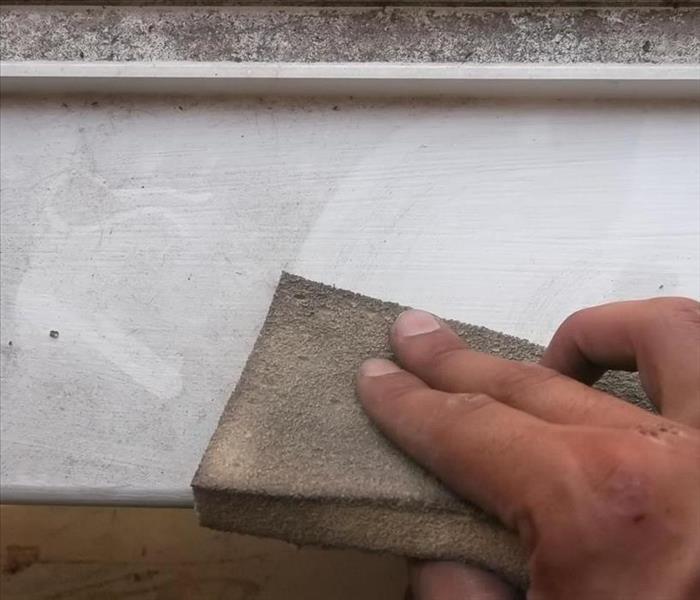 A dry cleaning soot sponge is effective for removing soot from smoke-covered surfaces. It is used to soot from surfaces you do not want to get wet.
A dry cleaning soot sponge is effective for removing soot from smoke-covered surfaces. It is used to soot from surfaces you do not want to get wet.
A fire is a disaster that can severely damage and even destroy property. There are many equipment and tools used in fire restoration, such as fire extinguishers, fire hoses, thermal imaging cameras, and more.
This article will discuss the most common of these tools - what they do, how they work to control or stop fires - so you know what to expect when you encounter them on your own property.
Tools Used For Fire Damage Restoration
HEPA Filtered Air Movers
A HEPA filtered air mover works by sucking contaminated air into one end of the machine, where a filter then catches any type of particulates such as dust or ash that would be present in either smoke or general debris from fire damage before they're expelled back out again through vents on the opposite side for immediate use with minimal risk of re-contamination. The filters inside these machines need to be cleaned or replaced every few months to keep them working at the highest efficiency level.
HEPA Filtered Vacuum Cleaners
A HEPA filtered vacuum cleaner is similar in function to a HEPA filtered air mover. Still, instead of sucking up contaminants with an intake on one side, it vacuums any debris and dust into its bag where all particulates are caught inside before being expelled out again on the other end for use without risking re-contamination from dirty filters or vents. These machines need regular maintenance like filter changes or cleanings as well.
Soot Sponges
Soot sponges are one of the most versatile tools used for fire restoration. They can be squeezed, twisted, and kneaded to let water seep into pores in a soot sponge where heat from an intense oil-based fire will dissolve it away or break these oils down while releasing particles that pose no risk to people when they touch them as well.
Debris Pads
Highly absorbent polyester debris pads help reduce the size of large debris by sucking up liquid and trapping any smaller particulates before they can spread out too far. These mats also need regular care, like removing dust and dirt off their outer surface between uses - especially if they'll be reused on site after being left outside for a while.
Buckets
Fire restoration often requires buckets - both small and large ones that can be used during firefighting operations and general cleanup afterward when the water has been used to put out the fire.
Tools Used for Putting Out Fires
Fire Hoses
A basic tool in any restoration effort is a fire hose for flooding an area with water and putting out fires. Often, it's just barely enough pressure to extinguish smaller flames. Still, they're more useful as a backup measure against larger blazes that need copious amounts of water or other types of liquids like foam-based suppressants. These hoses must be stored properly so they don't develop leaks or kinks over time which will cause them to lose their effectiveness when needed most because minor dents can become enlarged under continued use.
Foam Salt Dispenser
Often found in restaurants and food service facilities, this system uses salt mixed with soap which generates foam to suppress fires where there is a lot of grease or oil. This type of suppression can be used in any space with heavy metals like lead which would otherwise hamper the effectiveness of water-based firefighting methods.
Salt Water Sprinkler
This sprinkler system connects to your local municipal water supply. It injects saltwater into an area, suppressing flames by lowering their temperature and interfering with the chemical reactions that create them. They are effective for smaller spaces and larger ones because they work on liquid fuel sources, not just solid materials like wood or other organic substances susceptible to thermal oxidation (burning). The only downside is that it takes longer before the flame goes out, so this method isn't recommended when evacuation timeframes are tight.
Dry Chemical Sprinkler
This sprinkler system releases chemicals into the air that are heavier than air and will settle on surfaces with a high surface area to volume ratio. This makes them especially effective at fighting fires because they can reach up over 20 feet (about six meters). They also have a much broader spray pattern, which is why they're used for quick knockdown or point suppression when you want to get rid of the fire quickly before it spreads.
The downside here is that these systems only work well in small areas since as soon as the dry chemical gets wet from water pouring down onto it, its effectiveness disappears. It's also not safe if there are too many people inside an enclosed space like a room and needs to be evacuated.
The good news is that the dry chemical systems have a much better safety record than water-based fire extinguishers and can be used for large fires or small ones. They also work well on Class A, B, C, and D fires but not as well with E-type fuels like oil or gas because they need to come into contact with these types of materials to put them out.
All in all, though, there are many advantages to using this system over others when fighting a fire, so it's worth considering what equipment you want at your disposal if a disaster happens at home!
Avoiding Smoke and Fire Damage in Your Business
5/19/2021 (Permalink)
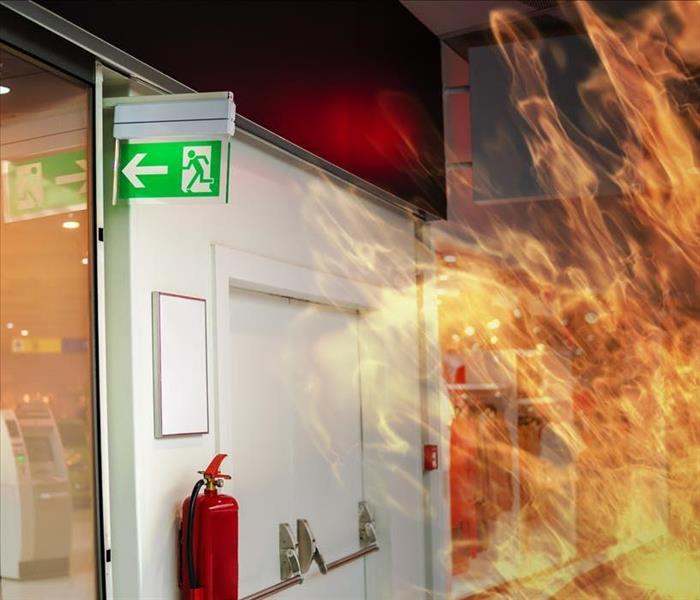 Having fire extinguishers in convenient and designated areas of your business can be crucial in minimizes fire and smoke damage.
Having fire extinguishers in convenient and designated areas of your business can be crucial in minimizes fire and smoke damage.
Smoke and fire alarms are necessary for any business that deals with or is near to a source of the fire. The smoke from a fire can easily be blown away by blowing air, making it harder to contain. A fire alarm system will alert you and your staff immediately, as well as notifying the proper authorities so that you can put off the fire and protect other people's lives.
Fire Safety
Avoiding smoke and fire damage in your business may seem simple enough, but fire safety is an important issue that must not be taken lightly. Your insurance will likely cover some of the costs associated with fire, but you'll still have to pay for the damages to your building. If you can avoid smoke and fire damage in your business, you can save yourself a bundle on your annual insurance premiums. Here are a few of the ways you can avoid damage caused by fires:
When Choosing a Business Location
When choosing a location for your business, you must consider the potential fire hazards your building may have. Many businesses are located near other businesses that have more potential fire hazards. For example, if you're planning to open a hair salon, make sure you avoid a building that's close to a beauty salon. This doesn't mean you can't set up shop somewhere else; it just means that you need to think about the fire hazards of your potential location carefully before you commit to it.
Make the Necessary Preparations
Make sure your building is smoke-free before you allow anyone inside. Any time you're entertaining company, you should keep a fire extinguisher on hand. It might seem easy to keep the extinguisher on a hidden shelf, but too often, small fires can go unnoticed because they're so small. In addition to keeping the extinguisher on hand, make sure any flammable items are out of reach of your guests. This includes anything flammable you might be storing near your business.
Active Fire Alarm System
Of course, the most important step you can take when it comes to avoiding smoke and fire damage in your business is to make sure you have your fire alarm system up and running. If you have an alarm for each room, you will know when the fire alarm is triggered, which means you can get out as soon as possible. If you're unsure which rooms your fire alarms should be placed in, you should consult with a professional fire safety expert. He or she will give you advice about the best place to put the fire alarms.
Avoiding smoke and fire damage in your business can be difficult. No matter how much money you spend on safety equipment, you might still end up with losses. The most effective way to avoid losses is to ensure that every room is equipped with a smoke alarm and fire extinguisher. You should also make sure that everyone knows where the fire exits are to leave the building in an emergency easily. A fire safety sign is another excellent way to minimize losses, as this will alert anyone in the building to evacuate in a hurry should there be a fire.
The Bottom Line
Remember that prevention is always better than cure. Avoiding fire and smoke is only half the battle. It would help if you also learned about fire prevention in your business to know what steps you should take should a fire break out. Many businesses overlook the most basic fire prevention practices, so many fires are caused because no one knows about them. Fire prevention training should be included in your regular training sessions for staff so that you can ensure that all of your employees know how to avoid any fire risks.
Can Smoke Damaged Clothing Be Cleaned?
5/17/2021 (Permalink)
 Depending on the severity of the damage, there are a few tricks you can apply to remove smoke odor from clothes.
Depending on the severity of the damage, there are a few tricks you can apply to remove smoke odor from clothes.
Can Smoke Damaged Clothing Be Cleaned?
Fire is among the biggest threats to an individual’s property. Its occurrence can damage prized possessions and reduce your house to ashes. In severe cases, victims may be forced to start from scratch. Having comprehensive homeowner’s insurance will not sort you out immediately. The process takes time, and you will need to figure out how to salvage some of your belongings. It will help you save costs while on temporary housing.
The smoke and soot during a fire event can damage your textile. It does not mean that everything will end up in the dumpster. You do not have to get rid of your favorite outfits since there are ways to salvage them. Here are critical tips for cleaning your clothing to rescue your wardrobe during such kind of trauma:
1. Sort out your clothes. The initial thing to do is to sort out what can be repaired from what cannot. Clothes with burn holes will be challenging to salvage; therefore, you will have to do away with them. Once you have identified what can be salvaged, sort them out in terms of fabric and washing instructions. Ensure to keep an eye on clothing accessories like beadwork, buttons, or metal fittings. In case of any damages, replace them with new ones.
2. The following action to take is to consult your insurance provider as soon as you can. It is because the process usually takes a while before you can be fully compensated. Nonetheless, starting early gives you a better chance of receiving your partial payout early, which can help cover basics as you wait to repair your house or permanent replacement.
3. When it comes to cleaning the clothes, get rid of excessive soot from the clothing. Shake off the soot without beating the clothes. Avoid using a brush since its bristles may force the soot deeper into your clothing, making it harder to remove. Instead, use a narrow, high-suction tip vacuum cleaner to get rid of the soot.
4. Once done with the soot, you can start cleaning your clothes. Make sure your dry-clean clothes are handled with professional dry cleaners with experience in smoke-damaged clothing. When handling polyester or cotton, ensure to wash them several times in warm water without any bleaching agent. For the bleach-safe clothing, make sure that you wash them several times in heavy detergent to remove the smoke odor. It is advisable to hand-wash the fire-damaged clothing for the first few washes to avoid your new load of laundry acquiring the smoke odor.
5. If the smoke odor persists, after several washes with household deodorizers, you will need to seek an expert’s assistance. Look for a company that provides quality ozone treatment service to help remove the stubborn smoke odor.
6. Finally, it would be best to contact highly experienced fire-restoration experts like SERVPRO of Winter Park for further advice. You can learn more tips on how to clean fire-damaged clothing and it can save you substantially. They have the appropriate training for restoring fire-damaged clothing and can guide you in doing the right thing.
Fire Insurance for Owners of Rental Properties
3/4/2021 (Permalink)
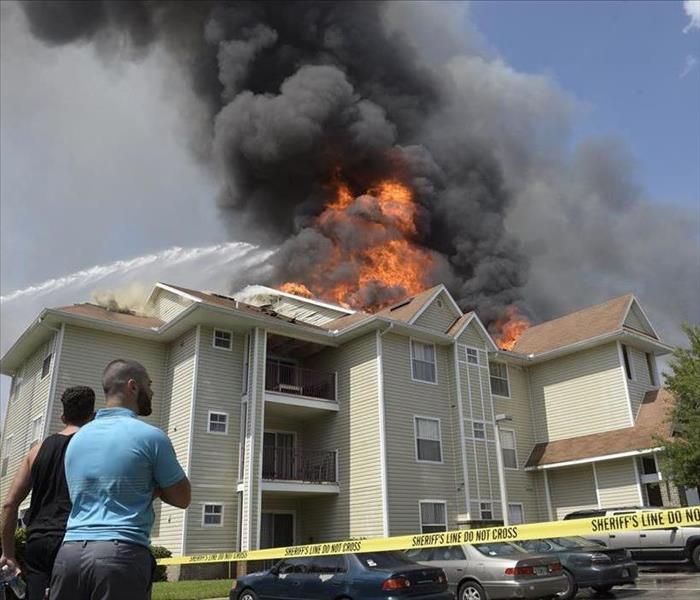 Coverage varies with fire insurance policies and it is important for property owners to select the right policy for their property.
Coverage varies with fire insurance policies and it is important for property owners to select the right policy for their property.
Dwelling Fire Insurance Dwelling fire insurance coverage offers a narrower type of coverage when compared to a standard homeowners policy. It is fire insurance designed to be focused on property damage. These policies can provide coverage for structures a person owns other than their home.
Flexibility
Property owners have a wide variety of coverage options with dwelling fire insurance. It's not limited to damage that is related to fire and smoke. Many policies provide coverage similar to a standard homeowners insurance policy. They can provide protection against hazards associated with weather such as lightning, and wind, explosions, vandalism, and more. Dwelling fire insurance will only cover specific perils listed in the policy.
Benefits
This fire insurance coverage is designed to protect the entire dwelling as well as structures on the property. It may cover personal belongings depending on if the policy is basic or broad. A policy could reimburse in the form of cash value or replacement cost. With cash-value coverage, a policyholder will get cash reimbursements for the repair-cost from a partial loss or a total loss. With replacement cost, the property will be replaced with a like-kind property at the current market price.
Dwelling Fire Coverage
- There are certain situations where dwelling fire coverage is the best option.
- Those who own a home that does not have much cash value. This could be an older home, manufactured home, or mobile home.
- Landlords who want to insure a building they own, but not the possessions inside of them.
- Individuals who own properties that aren't occupied full time. This could be a second home, seasonal home, rental property, and more.
- Individuals who own property that is being renovated or is under construction.
Extended Coverage
With dwelling fire coverage there is extended coverage. It would cover more things than are in the basic coverage.
- Volcanic eruptions
- Hail or windstorms
- Smoke
- Other explosions
- Aircraft or vehicles
- Riot/civil commotions
Fair Rental Value/Additional Living Expenses
This is a combined coverage. It will cover a policyholder for the loss of use of a dwelling as well as the loss of rental income due. Should a building that is rented be unable to be occupied, this coverage will provide protection for the loss of rental income. It will extend up to the limit of the policy. If a property can't be rented because the owner is forced to use the house, they will be reimbursed for the additional living costs associated with being unable to live in their own home. This is covered under additional living expenses.
Most Comprehensive
The most comprehensive policy is an all-risk or open perils policy. This means real property, such as dwellings and other structures, will be covered for all types of damage. The exception will be any exclusions specifically named in the policy. The damage to personal property, the items inside a dwelling, and other structures are usually covered on a named perils basis. There are some common exclusions.
- Earth movement such as an earthquake
- War
- Certain types of water damage
- Laws and ordinances
- Rot, mold, rust, and other gradual losses
- Neglect
Liability
Coverage for personal liability will pay for any legal damages awarded to a third party should the policyholder be found liable for damage as well as bodily injuries. It is also able to help pay for attorney fees and the court costs associated with a covered loss.
An insurance professional can help determine the best deductible for a policy that addresses a property owners' individual situation. This is the out-of-pocket expense a policyholder is responsible for paying before their coverage starts. It is possible to have a lower premium by increasing a policy's deductible. Fire insurance is usually part of a property owner's desire to minimize their risk. An insurance professional can also help identify the risk associated with a property and recommend the best possible insurance coverage.
What is Fire Insurance and What Does it Cover?
3/4/2021 (Permalink)
 It is a good idea to check your policy carefully to see what's excluded or limited.
It is a good idea to check your policy carefully to see what's excluded or limited.
Finding the Right Fire Insurance Coverage
If you live in an area where there are constant fires cooked up by mother nature, you may need extra fire insurance protection for your home. It is a good idea to check your homeowner's policy to determine whether you have adequate coverage.
In this guide, you will discover what fire insurance is and what it covers. Some of the exclusions will also be presented. Finally, you'll be able to take the information presented here to make an informed decision bout your individual insurance needs.
What is Fire Insurance?
A typical homeowner's policy has fire coverage built into it. Most mortgage lenders won't give you a loan unless you have insurance that includes fire protection. You can also purchase additional coverage if you feel that your current homeowner's policy may be inadequate.
What does it cover?
Fire insurance covers the homeowner against total loss or damage from a wide range of sources. These sources include:
- Lightning strikes
- Faulty electrical wiring
- Natural disasters
- Appliance malfunctions
- Careless smokers
- Gas explosions
- Other accidents
Arson is normally covered. However, if someone who regularly lives in the home, like a family member, intentionally sets the house on fire, it is not covered.
These are the types of properties covered by fire insurance
Dwelling coverage.
If your home is considered a total loss due to fire, your homeowner's policy will kick in and provide the funds to rebuild your home. It will also cover any costs to remove debris from your property and haul off the remains of your charred house. It is calculated based on either the actual cash value of the house or the replacement cost. It is also based on your coverage limits.
This presents two problems:
1. Your coverage limits may not be enough to cover the costs to rebuild your house in today's market.
2. Your homeowner's policy is often based on actual cash value and not replacement cost. The difference is, the replacement cost model will provide funds to rebuild your home in today's market. On the other hand, actual cash value policies only cover your home's depreciated value.
So, let's say you bought your home ten years ago and it recently suffered a total loss due to fire damage. With an actual cash value policy, you would only get enough to cover what the house was valued at ten years ago, not what it would cost today to replace it. By having an additional fire insurance policy, you can increase coverage limits to include what the house would cost to build in today's market.
Other types of property covered
Other structures on the property. Any structure that is not attached to the home is usually covered by fire insurance. Here are a few examples of the types of structures covered:
- Toolshed
- Barn
- Detached garage
- Fences
Personal property.
These items consist mostly of your belongings that were inside the house during the time of the fire. Here are just a few examples:
- Clothing
- Furniture
- Electronic devices like TVs and computers
Your insurance company may set some limitations on covering the personal property. For example, if you own luxury items such as fine clothing, jewelry, or antique furniture, there may be additional limits to those particular items. It is a good idea to check your policy carefully to see what's excluded or limited.
Other "loss of use" coverage.
If you have no place to live while your home is being repaired or rebuilt due to fire damage, you are covered for the costs of staying in a hotel or other living accommodations.
The costs of feeding yourself and your family are also taken care of, up to certain limits. Even the costs associated with pet care and boarding may also be covered. It's best to check with your insurance advisor concerning all those important details.
What Is Not Covered?
Cars and other vehicles.
Usually, comprehensive auto insurance will be enough to cover fire damage or loss to your vehicle.
The home was vacant for more than 30 days during the time of the fire.
Vacant home insurance is available to cover these and other events.
Nuclear radiation or war.
These and other conditions like them are usually spelled out pretty plainly in the policy.
Reasons for denial of coverage
When everything has settled after a fire in a home, the fire department will usually investigate the cause and report it to the insurance company. Sometimes the insurance company will conduct their own investigation. The data is then compiled to determine whether they will cover the damages or deny your claim.
Here are some of the most common reasons why you may be denied:
Illegal activity
If, after your house burns down, the fire investigator discovers you or someone living in your home was making illegal drugs anywhere on the property, you will not be covered.
Illegal modifications to the home
An insurance company may deny your claim if they find any unpermitted work done to the structure. For example, if the previous owner added on to the home and there were no permits involved, that could complicate things. Your claim would probably be denied, especially if the fire came from that addition.
Documentation errors
Sometimes it's just a matter of getting everything right with the paperwork. Most of the time, it's no big deal, unless there's fraud involved. In most cases, if you have been truthful about what items were in the home during the fire, and there is no criminal activity involved, you should be able to get your claim processed quickly.
Saving Your Electronics After a Fire
11/12/2020 (Permalink)
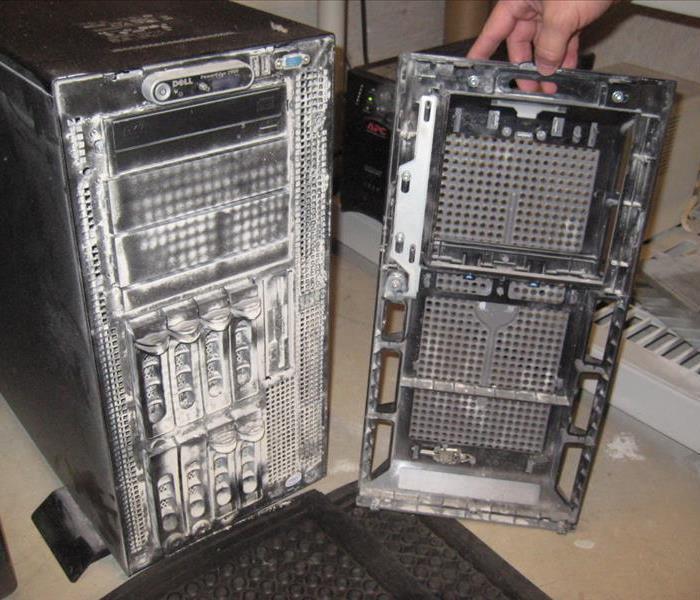 Electronic equipment affected by smoke damage from a fire can usually be restored by using the correct cleaning methods.
Electronic equipment affected by smoke damage from a fire can usually be restored by using the correct cleaning methods.
Can Your Electronics Be Saved After A Fire?
Given how important electronics have become to daily life, losing and having to replace them after a home or office fire can be a major inconvenience. So, other than having your equipment replaced by your fire insurance policy, can your equipment actually be saved? A fire does not always mean you will always be at a complete loss. In many cases, electronic equipment can actually be cleaned and restored.
When a fire breaks out, the heat will cause the plastics and metals most electronics are comprised of to produce toxins that damage them. Trying to use them while they are damaged can cause additional problems; also, if or when water is used to extinguish the fire, trying to use them before they are completely dry will quite likely ruin them.
Before a fire is extinguished, smoke can enter into the components of your electronics and leave a thin, black film. This film insulates electronics, causing them to be more likely to overheat and ruin. Short-circuiting can also happen because the film is magnetically charged, which could cause an additional fire.
Smoke from a fire also carries with it soot (material that did not ignite). Soot covers the outside of the electronics and can also be found inside them. This is acidic, which makes it dangerous and discolors them as well as shortens their lifespan.
Cleaning and Restoring Your Electronics
Although having fire and soot damage to your electronics is certainly a terrible thing, they can be cleaned and restored. First, disconnect them from their power sources by unplugging them and removing batteries. Next, use a rag to wipe down their exteriors while making sure to clean any soot marks. Thirdly, you will need to use an air compressor to clean out outlets, ports, and air vents.
Damage or dirtiness from a fire can be beyond what most people are able to deal with; in such a case, seeking professional help is needed. Also, home insurance policies can cover your electronics.
Computers and Hard Drives
A computer is one of the most valuable electronics anyone can have in terms of productivity. So you definitely want to make sure a fire cannot cost you your data. Therefore, cleaning and restoring it, or at least the hard drive where all of your data is stored, should be your top priority. Even if you have to get another computer, being able to connect your hard drive means you will have lost none of the data and will be able to continue on just as if you did not have to buy a new computer. Remove it from the fire-damaged computer first and have a SATA to USB adaptor.
Being able to store the information of your hard drive elsewhere (such as cloud storage) is recommended as well because if the hard drive is too damaged from a fire and a new one is needed, you will be able to download everything, meaning you lose nothing. Also, replace the battery in a computer as well to prevent the old one from igniting.
Smoke Damage Restoration in Winter Park
6/12/2020 (Permalink)
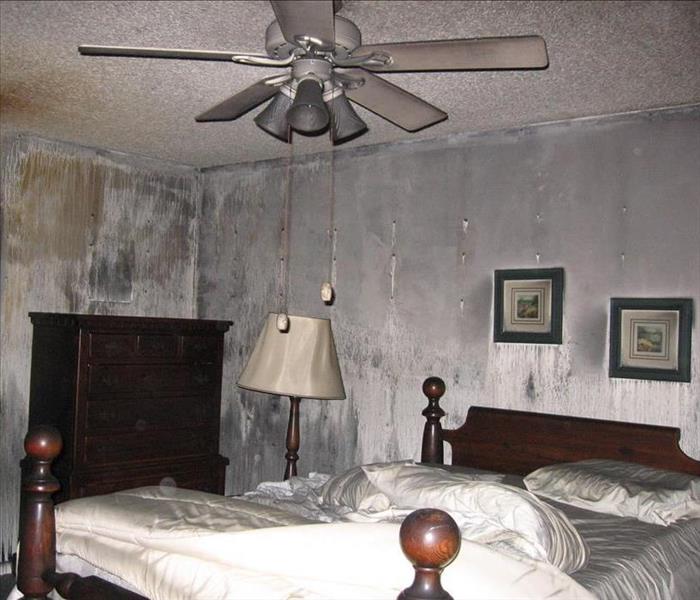 After a fire strikes your residential property, there are a plethora of tasks that you must complete to expedite the remediation process.
After a fire strikes your residential property, there are a plethora of tasks that you must complete to expedite the remediation process.
Brief Overview
After a fire strikes your residential property, there are a plethora of tasks that you must complete to expedite the remediation process. One of the most crucial tasks that you will need to attend to is Winter Park smoke damage restoration. Often, homeowners believe that completing a do-it-yourself project is advisable because it will save them time and money. However, this is almost never the case. In fact, hiring a professional smoke damage restoration company is the best route to take because these individuals possess the experience and equipment necessary to optimize the remediation process. Learn more about smoke damage restoration and the importance of hiring a professional company by reviewing the following data:
Performing The Fire Damage Assessment
One of the most significant components of the Winter Park smoke damage remediation process is completing a fire damage assessment on your property. This work will help determine the extent of the damage done by smoke and fire. The best way to get the process started is to contact your insurance company and a smoke damage restoration company. These individuals will be able to inspect your property and provide you with a cost estimate for the cleanup and repair processes. If you can obtain a referral to a restoration company by your insurance company, the two companies will likely be able to work together to create a fair settlement. If this happens, you will probably pay less money out of pocket for remediation services.
Cleaning Your Home
After completing a detailed assessment, professional restoration companies will start cleaning up the fire damage in your residential property. Dehumidifiers will help absorb excess water. Smoke damage restoration experts will also utilize cleaners and deodorizers to remove soot and smoke from your property.
Contact SERVPRO Today
Winter Park smoke damage restoration is a complex, complicated process that should be left to the professionals. When you start looking for a team of trained experts to assist you, trust the talented technicians of SERVPRO. We offer round the clock emergency services and work with speed and skill to resolve all smoke issues as quickly as possible. Call us immediately at (407) 678-5391 to attain the excellent, expedient smoke damage restoration services you deserve.
Locally Owned Company with National Resources
As a locally owned and operated business, SERVPRO of Winter Park is strategically located to respond quickly to your smoke or fire damage event. When a major fire or disaster event occurs, we can call upon our national network of 1,650 SERVPRO Franchises and special Disaster Recovery Teams if we need additional resources or personnel.
We are here in Winter Park and are ready to help you. Just call us. (407) 678-5391
Avoid Smoke and Fire Damage UCF With These Tips by SERVPRO
5/20/2020 (Permalink)
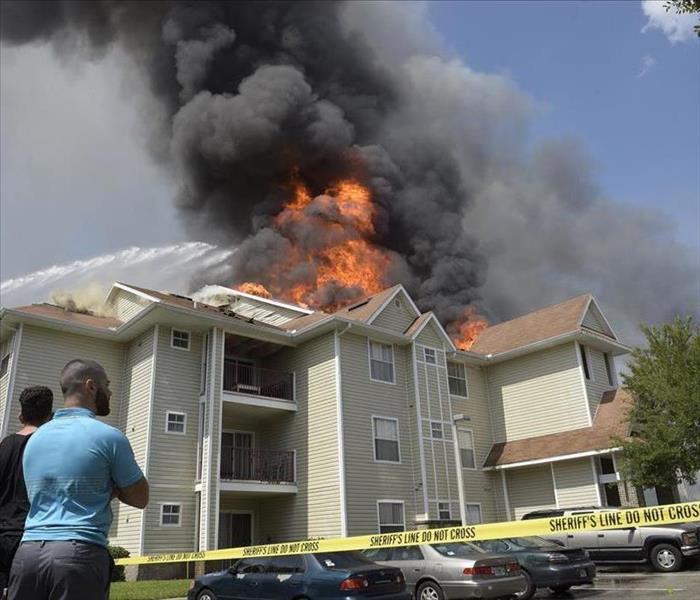 Having an escape plan will minimize your risk of injury or worse in the event of a fire
Having an escape plan will minimize your risk of injury or worse in the event of a fire
A vigilant approach is the best way to avoid a house fire. By taking the proper precautions listed by SERVPRO, homeowners can protect their house from smoke and fire damage.
Creating an Escape Plan
A National Fire Protection Association survey revealed many homeowners overestimate the time they have to escape their house during a fire. Since a home fire is an unexpected, high-stress event, it is imperative to create an escape plan. The ideal plan has an exit strategy. A minimum of two ways to exit each room when possible, and ensure windows and doors can be easily opened. Nobody should reenter the house to retrieve pets or belongings after escaping the fire.
Following Safe Electrical Guidelines
According to the U.S. Fire Administration, 280 people die, and 1,000 more people are injured in America every year due to electrical fires, many of which are preventable. Homeowners should:
- Matchlight bulbs to each light fixture and lamp's recommended wattage.
- Plug all major appliances into an outlet instead of a power strip or extension cord.
- Talk to an electrician about installing AFCIs or arc fault circuit interrupters, to shut off electricity in the event of a dangerous arcing fault.
- Use a single heat-producing appliance in each outlet at one time.
Installing Smoke Alarms
When it comes to fire prevention, smoke alarms are an essential preventive tool a homeowner can use. Statistics from the American Red Cross show that 65 percent of deaths from home fires occurred in houses that did not have an operable smoke alarm. All smoke alarms should be interconnected, so they sound off when smoke is detected, and alarms should be replaced every 10 years even though they still work. Homeowners should also make sure to install detectors in the basement, in every bedroom, outside each bedroom door, on every level of the home and ten feet or more away from cooking appliances.
Practicing Cooking Safety
Fire damage caused by cooking accidents costs homeowners $1 billion according to the National Fire Protection Association. Because cooking is a common home activity, it carries serious safety risks. SERVPRO recommends that homeowners:
- Never leave cooking food unattended.
- Store flammable materials in a location away from the stove and oven.
- Use a timer while cooking to prevent them from falling asleep or forgetting about the cooking food.
Fire Damage Repair Process
4/23/2020 (Permalink)
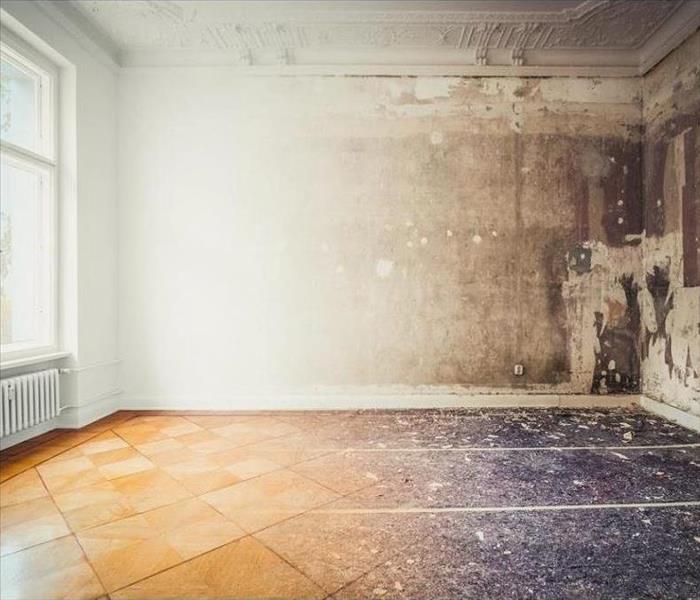 Only professional fire restoration experts are equipped to properly return your property to its previous state following a fire!
Only professional fire restoration experts are equipped to properly return your property to its previous state following a fire!
How Do You Restore Fire Damage?
Fire is incredibly dangerous. Even a small fire can cause massive harm to any structure. If your home has been damaged by fire, you'll want that fire damage restoration process to begin immediately. The good news? The process is highly detailed and includes all areas of your home. When you work with a fire damage restoration company, you're working with experts. They know exactly how to get rid of the damage. They'll rid your home of all fire-related problems and make it easy to move back in.
A Complete Assessment
The first part of the process consists of a complete examination of the entire area. Fire damage can be very subtle. Even areas that seem just fine may have issues that are hard to spot. An expert can see weakened floorboards and support beams that may have suffered stress when touched by smoke. They'll make sure these problems are remedied before they become much greater and possibly cause even more structural problems.
Dangerous Areas
Another crucial part of creating a space in the aftermath of a fire is making sure the place is safe. Both fire and the water and/or chemicals that are used to put it out give off unsafe fumes. These fumes can linger in the air even after the fire stops burning. Part of the process of removing damage caused by a fire is ensuring that areas that are not safe are discovered and then blocked off. It also means making sure such areas are not further damaged when exposed to outside elements.
Water Problems
When water is used to put out a fire, water can pool in the house. Water used this way needs to be removed as soon as possible. Fast-drying means the water can't stay there and lead to mold or even insect infestation.
Smoke and Soot
Soot can be in the air the aftermath of a fire. Fine particles from a fire can coat surfaces and cherished items. During an effective fire damage restoration, the company fully removes any existing soot from every possible surface. It also means getting the smell of smoke from the home. Modern air scrubbing technology means no more smoke odor.
Cleaning and Damaged Items
Once the initial restoration process is underway, it's time for a more thorough look. Items that are totally unsalvageable must be hauled away and discarded using all necessary safety procedures. The remaining surfaces can then be completely cleaned.
Finishing Up
Determining damage and cleaning up areas hurt by soot and smoke are the first part of the process. The second is repairing it all. Walls that need new drywall can be redone. Areas in need of painting can be painted again by professionals. Other issues such as carpets and flooring that are hit badly by smoke will also be restored to their desired condition.
It can feel bewildering and scary in the aftermath of a fire. Contacting professional restoration experts is the best way to move past such damage and come home.
Forming a Fire Evacuation Plan Effectively
1/29/2020 (Permalink)
 For businesses, using signs and practicing your fire evacuation plan with employees can help ensure their safety in a disaster.
For businesses, using signs and practicing your fire evacuation plan with employees can help ensure their safety in a disaster.
A fire evacuation plan is a written or verbal blueprint for how to remove people from dangerous smoke or fires. Not having a plan can lead to confusion and chaos as well as possible injury or death. Of course, no one ever imagines that a fire will happen at their home or business. However, a small spark can quickly turn into rampant flames, and wildfires can rapidly move into residential areas. Therefore, it is vital that home and business owners prepare to evacuate at a moment’s notice.
The Benefits of Having a Fire Evacuation Plan
As mentioned, it is important to have fire evacuation plans in place in order to protect against injury and loss of life. While this is certainly the most important benefit, it is not the only reason why it is important for you to draft a plan as soon as possible. If you are a homeowner, you should know that fire can spread quickly throughout your residence. In fact, you most likely only have two minutes to get your family members and yourself out of your home after hearing the smoke detector. A plan will help you move quickly without giving in to panic.
As an employer or manager, OSHA most likely requires you to have some type of emergency preparedness plan in place. Your plan will also benefit you by setting up a clear chain of command and by giving employees regular opportunities to practice evacuating. When employees know what to expect, they will be able to move faster while maintaining a sense of order even in the face of danger. It can be difficult to think about danger entering your home or business, but taking the time to craft an evacuation plan significantly improves everyone’s chances of survival.
A Thoughtful Plan for Homeowners
If you are crafting a plan for your family, you must first consider the possible ways to escape from your home. After drawing out these routes, you should let all family members know what they should do in case of a fire. Tell them how they can escape from the home, what they should take with them, where they should go and how they can contact you or another close family member. You may want to set up a safe spot in your neighborhood and include plans for rescuing pets. Write down every part of your plan, and regularly practice evacuating with your family members.
Next, complete your plan by building a disaster kit. This bag should be placed next to the primary emergency exit in your home so that someone can easily grab it while running to the safe spot. Include emergency health information, cash, extra clothing, telephone chargers and other items that will help you connect with each other, maintain your health and rebuild your life following a fire.
A Well-Crafted Plan for Business Owners
Fire evacuation plans for business owners have similar goals but can be more detailed because of the larger size of the building and the number of employees present. The plan should first establish an emergency preparedness team. This team will be responsible for crafting the rest of the plan.
Evacuation routes are vital and should be posted near doors in every room of the building. Evacuation plans should also prepare for certain contingencies, such as blocked stairways. The plan should tell employees what they should do if they spot a fire and where safe evacuation locations are. Finally, the team should schedule regular evacuation drills at least once each year so that employees can memorize their responsibilities.
Restoration Following Fire Damage
Should a fire break out in your home or business, your primary goal is to protect the lives of those under your care. However, once the danger is past, you will quickly recognize a new goal, which is to repair and rebuild what was damaged by the fire. Professional help is vital for repairing damage to walls, floors, and ceilings from smoke, soot, and fire. Plus, you will need to consider addressing the water damage that occurred from firefighting efforts.
At SERVPRO of Winter Park, FL, we can provide quick emergency services for homes and businesses. With plenty of training to respond to any type of fire disaster, our technicians will help you restore what you have lost rather than making you replace all your damaged property. Not only can this ease your financial burden when filing an insurance claim, but also it can let you get back to your life as quickly as possible. If your home or business has sustained fire damage, make sure to give us a call at (407) 678-5391 to get your property back to the way it was.
The Importance of a Fire Escape Route in Your Property
9/4/2019 (Permalink)
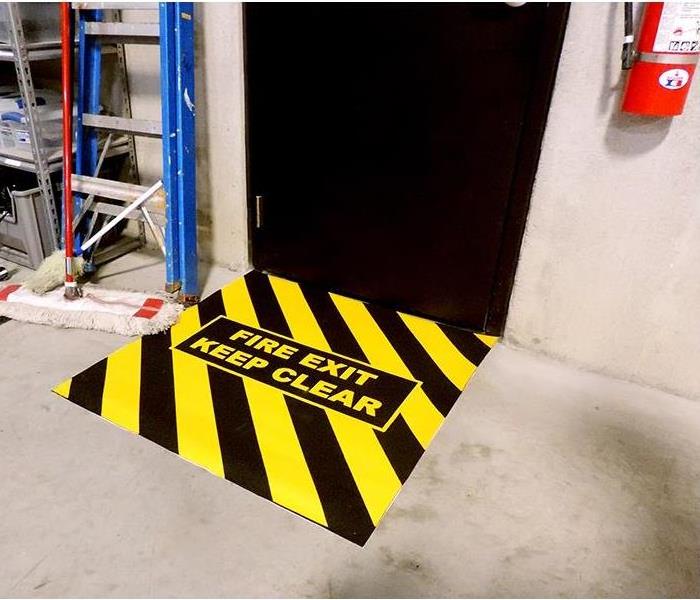 Find the safest exits in your property and educate your household or employees where to go in the event of a fire
Find the safest exits in your property and educate your household or employees where to go in the event of a fire
A fire can happen suddenly and grow quickly. Fire can become deadly and needs to be taken seriously. Is your family or business ready if a fire were to happen in your environment?
For most, the answer to this question is no. The first step to fixing this issue is to make a plan for where everyone is located and how to handle it. The best way to do this is to map it out. Put pen to paper with the layout of your home and/or business, where each individual or group is located, and what route they need to take during an evacuation.
After making a map be sure to mark on that map where all of the smoke alarms are. To be up to standards there should be one on each level, and ideally one in each room. Make sure that these batteries are changed at least every 6 months.
The next step is to establish the exact place where everyone needs to meet. For a family, it may be the giant oak tree across the street. For a business it may be one place or several places if it is a large establishment. It is important to know where this place is, and how many people should be there. When the fire station comes they will ask if everyone is present and accounted for to know how many and who they need to look for.
When you have made it to a safe place you will finally need to call 911. The fire department, ambulance, and police will be dispatched in ordered to get the fire under control and any medical attention taken care of.
When everything is under control give us a call at SERVPRO to help clean everything up and get you back into your home.
Fire Safety for Orlando Hotel Managers
7/30/2019 (Permalink)
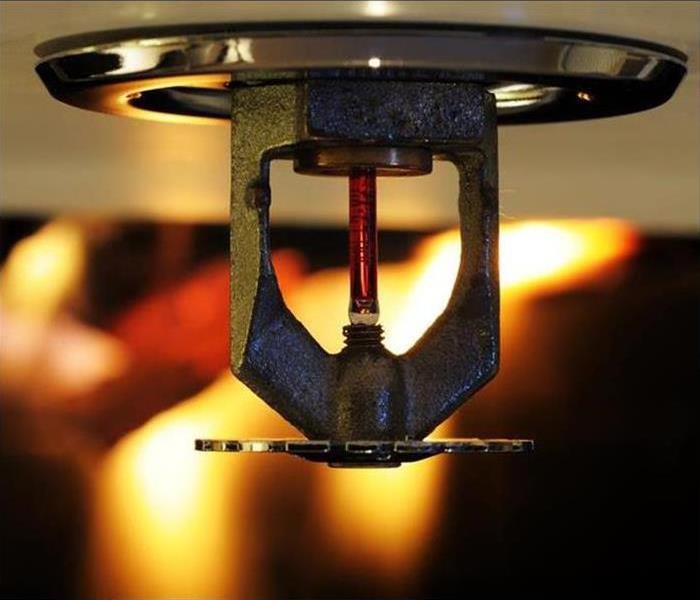 Fire sprinklers are a great way to alert staff and guests of a fire and can help minimize the damage sustained.
Fire sprinklers are a great way to alert staff and guests of a fire and can help minimize the damage sustained.
Introduction
In Orlando, FL, concerns about fire safety is typically the last thing on the minds of your hotel’s guests. Hotel fires can put many people’s lives in jeopardy, particularly sleeping guests and those who live on the higher floors of the hotel building. Fires can also cause large-scale damage to your business.
Policies within the Regulatory Reform (Fire Safety) Order 2005 require hotel management to conduct fire assessments, to apply fire control and prevention initiatives, and to give people the tools and knowledge to evacuate a fire as safely as possible.
Hotel fire can be very deadly, often taking the lives of those who are unaware of the danger and who are unprepared for it. Applying an appropriate amount of safety training and resources for your hotel can prevent the unthinkable.
Fire Safety for Hotels Checklist
The Regulatory Reform establishes a series of fire control responsibilities that must be handled to ensure that your hotel is safe for both guests and your staff. Any hotels who are lacking in fire safety measures can be issued notices requiring the hotels to address these deficiencies. In the most severe cases, the authorities may prevent the business from operating as usual until there is progress on attaining full compliance with the Reform’s standards.
This Fire Safety for Hotels Checklist is divided into these topics:
• Fire Risk Assessment
• Fire Wardens
• Fire Training
• Fire Detection and Fire Alarm Systems
• Maintenance
• Fire Route Plans
• Fire Evacuation Plans
• Informing Guests of Fire Safety
Fire Risk Assessment
A fire risk assessment involves five steps.
• Hazard identification: consider the means by which fires can happen, such as obstructed ventilation and damaged electrical plug sockets. Locate potential sources of kindling as well, such as paper, laundry, chemicals, and furniture.
• At-risk individuals: you must assess who are the most vulnerable people in the event of a fire. Guests should be your main focus. They generally don’t know your building’s layout and could even be soundly sleeping when a fire breaks out. Another important group to consider are those with hearing, seeing or mobility disabilities.
• Fire safety measures: assess ways to establish or improve upon current fire safety practices. This may include better housekeeping procedures, such as periodic checks of electrical appliances and plugs. Constructing disability-minded escape routes on the levels above the ground floor may be another measure.
• Record findings and corrective actions: The Regulatory Reform authorities will inspect your hotel records to ensure that you are actively managing your fire safety risks and hazards. This includes past compliance with their standards. This means that it’s necessary and wise to write down everything that you do and everything that still needs to be accomplished.
• Review: hotel buildings and their appliances do not last forever. This means that new hazards will show up from time to time and past fire control measures will lose their effectiveness. You must periodically reassess risks, reestablish control measures and rerecord fire prevention and control-related information.
Fire Wardens
It will be your responsibility to appoint someone with sufficient competence to serve as the hotel’s fire warden. This person will be responsible for the hotel’s fire safety, prevention, and evacuation guidelines. The fire warden can be someone picked out by you, or you can serve the role yourself. Either way, the designated fire warden must gain both technical and practical training in fire safety procedures so that they are well-versed in preventing and combating fires.
Hotel guests can’t be expected to know the building’s escape routes enough to evacuate efficiently, meaning that they may rely solely on someone who can guide them to safety during a fire. Fire wardens should maintain a guest list for this reason, and they should work with fire rescue personnel in cases when someone on the list cannot be accounted for in the evacuation process.
Some hotels are so large or complex that they need multiple fire wardens. At the bare minimum, there should be one fire warden on each floor, for each shift. Considerations should also be given for holidays and covered shifts for sicknesses or vacations.
Fire Training
You must provide fire training so that employees can respond appropriately to the alarm ringing. This includes situations when an employee should sound the alarm if it doesn’t go off automatically. This training includes fire hazard prevention measures, such as spotting and reporting problems, as good housekeeping practices. Training should also include the different types of fires, fire extinguishers, and how to correctly use them. Hotel training should familiarize the staff of all types with fire escape routes and locations for people to assemble during the evacuation phase. All employees should know who are the appointed fire wardens and when they have to fulfill that role.
Fire Detection and Fire Alarm Systems
A hotel's fire detection and alarm system are legally mandated. It’s your responsibility to ensure that manual call points are installed throughout the building in easy-to-spot locations. If the staff can find these manual call points without any trouble, then they can activate them more efficiently if a fire or fire damage is observed or reported.
Smoke detectors should be inspected monthly at a minimum. Manual call points should be tested weekly during normal business hours. Alarms throughout the hotel should be loud enough to immediately wake up guests and alert hotel staff of the fire hazard. Room alarms close to the head of the bed should ring around 75dB. Hotel guests must immediately wake up and begin evacuation efforts in the event of a fire. This is because guests can suffocate from unsuspectingly inhaling smoke while asleep, even post-evacuation.
Maintenance
A competent employee with technician experience or an external contractor should periodically check equipment and conduct necessary repairs.
Some items that should be inspected include:
• Kitchen appliances
• Fire doors
• Firefighting equipment
• Plug sockets
Make sure to keep maintenance and repair records. They serve as proof that your hotel is in compliance and inform you of upcoming servicing and checks.
Escape Route Plans
Escape routes should be positioned in ways that ensure that anyone can safely reach them even if the fire blocks out a different path.
Escape routes should:
• Be enclosed with smoke- and fire-resistant materials
• Be obstruction-free
• Be accessible for those with disabilities
• Remain closed as much as possible to prevent the spread of smoke and fire
Fire Evacuation Plans
For hotels, one of two evacuation plans are typically used:
• Simultaneous evacuation: small, uncomplicated hotels have alarm systems that warn all rooms and floors to evacuate simultaneously.
• Horizontal/Vertical phased evacuation: for more complex hotel structures, the system is designed to sound alarms and evacuate those who are in immediate danger first.
Your risk assessment and your local fire service can inform you if you need more information.
Informing Guests of Fire Safety
Your hotel guests should be immediately informed of manual call points and escape routes. Fire safety information forms for guests should clarify:
• Steps to take if the guest sees a fire or if the guest hears the alarm.
• The closest fire exit route from their hotel room & a floor plan.
• The closest assembly point location.
SERVPRO of Winter Park
In the event of a hotel fire, reach out to SERVPRO of Winter Park, serving the Orlando, FL area. SERVPRO of Winter Park can manage fire damage restoration projects at commercial levels for hotels or resorts.
Cleaning Clothing After A Fire in Orlando
6/7/2019 (Permalink)
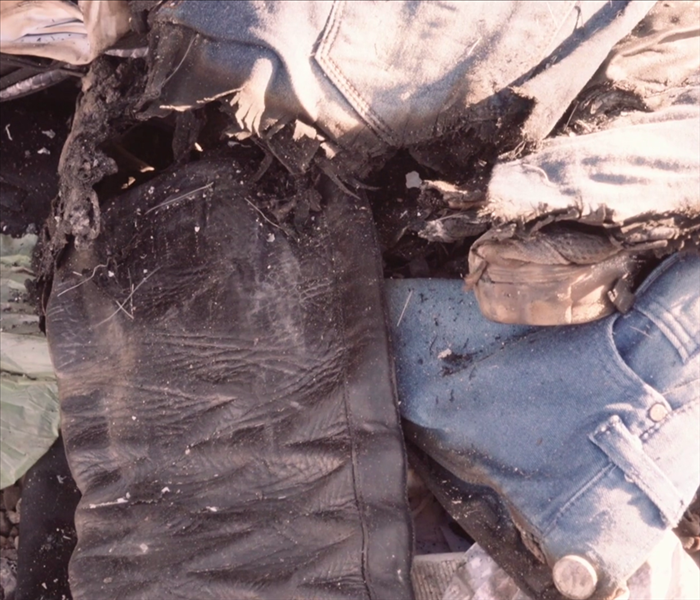 Sort through clothing carefully to make sure you only attempt to wash items that are salvageable. Discard items that have been burned and have holes.
Sort through clothing carefully to make sure you only attempt to wash items that are salvageable. Discard items that have been burned and have holes.
Recovering from a fire in Orlando can be a long, time-consuming process, even if there was little to any physical or structural damage. Just the smoke from fire alone can create a significant amount of damage, which can be difficult to mitigate. Clothing, furniture, and upholstery can all reek of smoke, even if they are far from the flames and in some cases can even be stained with soot. In most cases, you will likely need to hire a professional remediation company to restore furniture and upholstery, but you may be able to restore clothing on your own. Here are four steps to cleaning clothing after a fire.
1. Inspect Clothing Carefully to See What Can Be Salvaged
Some clothing may have burn holes or be stained or damaged beyond your ability to salvage it. Because clothing restoration is a time-consuming process, you want to focus on only what can be salvaged. Your fire insurance will most likely cover the cost of replacing clothing that cannot be salvaged.
2. Deodorize
Before clothing can be cleaned it will need to first be deodorized through a process called an ozone treatment. Ozone treatment is an oxidation process that cleans your clothing similar to the way rain cleans the air. Before you attempt to clean your clothes, it is extremely important to have them professionally deodorized with this unique treatment. Using ordinary fabric deodorizers will merely mask the smell temporarily, but eventually, the perfume of the deodorizer will evaporate, leaving your clothing once again reeking of smoke. The smell will also permeate any new clothing you purchase, so it is vitally important to have them professionally deodorized. In some cases, a fire restorer will use an ozone generator and in other cases, they will deodorize them in an ozone room.
3. Sort Remaining Clothing According to Type
Some types of fabric will be more difficult to get the smoke smell, soot stains or other stains out of, so you want to sort clothing by recommended care (found on the label), color (Light/ medium/ dark) and degree of soil (light/ medium/ heavy). You may end up with several small loads of clothing, but you want to keep them separate rather than combine them into larger loads. You will almost invariably have to wash each item several times, so it is more important to sort them by care label than you might with a single wash. Some clothing will need to be taken to an Orlando dry cleaning facility, but they may need to be professionally wet cleaned in spite of the dry clean only label.
4. Choose the Right Detergent
Different detergents will be more effective at removing scents, stains, soot and soil from different fabrics. The majority of clothing items will most likely be cotton, polyester, or poly/cotton blends. The effectiveness of cleaning will depend largely on the type of fabric and the type of detergent used. In tests, 100% polyester has the least likelihood of being returned to its original color and state. Pure cotton and poly/cotton blends are most effectively treated by washing in warm water anywhere from one to four times with either a liquid detergent or a low phosphate powder detergent and a liquid chlorine bleach. Because bleach will damage some fabrics and is not generally safe to use on darker clothing, it is better to use liquid detergent on darker clothing. Lighter clothing and whites will generally fair better with chlorine bleach. Powder detergent on its own is only partially effective at returning clothing to its original state. Dry cleaning is also the least effective method, so some dry-clean-only clothing may not ever return to its original condition.
TSP Products for Smoke Odor Cleanup and Removal
5/21/2019 (Permalink)
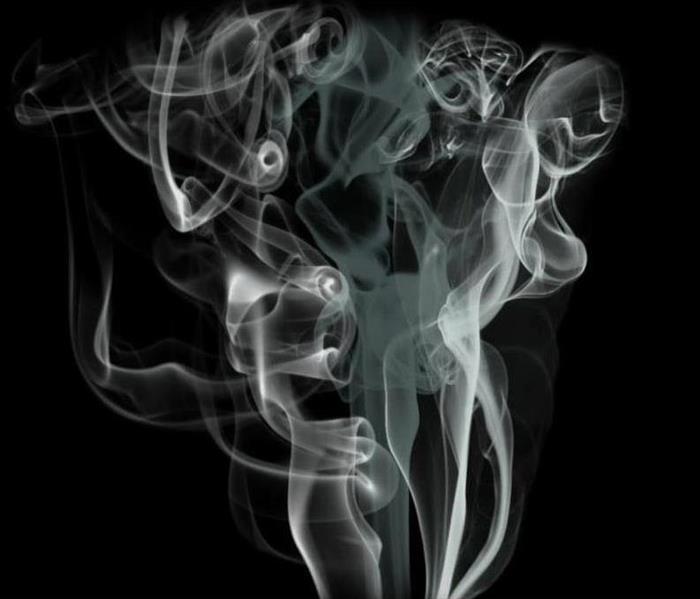 Aside from cleaning soot and residue, odor from smoke can be extremely difficult to get rid of.
Aside from cleaning soot and residue, odor from smoke can be extremely difficult to get rid of.
TSP on Garments
Products containing tri-sodium phosphate (TSP) can reduce odors in fabrics. TSP is caustic so be careful! Read the label for directions and safety instructions.
Test garments before using any treatment, and follow the manufacturer's instructions. Smoke odor and soot can sometimes be washed from clothing that can be bleached. Measure 4 to 6 tbsp. Tri-Sodium Phosphate and 1 cup household cleaner or chlorine bleach for every gallon of warm water you will use. Alternatively, consider washing clothes in cold water with your usual household laundry detergent, and adding one tablespoon of pure vanilla extract.
TSP on Walls, Furniture, and Floors
To remove soot and smoke from walls, furniture and floors, use a mild soap or detergent or mix together 4 to 6 tbsp. tri-sodium phosphate and 1 cup household cleaner or chlorine bleach to every gallon of warm water. Wear rubber gloves. Be sure to rinse surfaces with clear warm water and dry thoroughly.
Wash walls one small area at a time, working from the floor up to prevent streaking. Rinse with clear water immediately. Ceilings should be washed last. Do not repaint until walls and ceilings are completely dry. Reduce the chances of growth of mold and mildew by wiping down all surfaces that had gotten wet with a solution of one cup of liquid household bleach to a gallon of water. (Test surfaces to ensure that the bleach solution will not discolor these surfaces. To conduct this test, wipe a small area of the surface with the bleach solution, and allow it to dry at least 24 hours.)
Washable wallpaper can be cleaned like painted walls, but do not wet through the paper. Use a commercial paste to repaste any loose edges or sections.
5 Tips to Prepare You in Case of a Fire
4/24/2019 (Permalink)
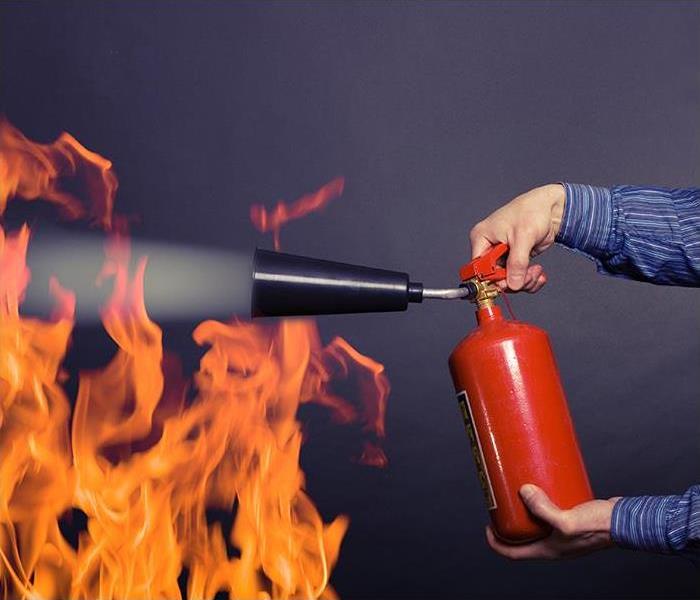 Check fire extinguishers regularly to ensure they are working properly in the event of a fire.
Check fire extinguishers regularly to ensure they are working properly in the event of a fire.
A house fire is a disaster that is easily preventable. Every homeowner and family member should take the time to do the following to ensure fire safety.
1. Install Smoke Detectors Throughout the Home
The first step for preventing a residential fire is properly installing enough smoke detectors throughout your home. Smoke detectors should be installed on every floor of your home and close to any bedrooms. To make sure that the detectors are always in working order, you'll want to test them out once a month. Batteries in smoke detectors should be replaced once a year. Smoke detector manufacturers suggest that they should be completely replaced every 10 years. Do not disable any smoke detectors while cooking, as this can potentially result in tragedy.
2. Install Fire Extinguishers
Once you've got the smoke detectors installed, it's time to make sure that you have fire extinguishers readily available throughout your residence. These will come in handy should you experience a small fire. Using a fire extinguisher will prevent you and your family from having to battle a bigger fire. Fire extinguishers should be kept in the kitchen, garage, and any workshop areas of your home. Similar to smoke detectors, fire extinguishers should be checked regularly to ensure they are working properly.
If you are not sure about how to use a fire extinguisher, consider contacting your local fire department on training information to get you started. You'll be able to learn how to properly use and maintain it. It is also important to know that there are different types of fires and different types of extinguishers used to put them out.
3. Teach Kids About the Dangers of Fire
Let's face it, kids are curious. This is a good and bad thing, but when it comes to something life-threatening like fire, curiosity can quickly turn into danger. Over 100,000 fires are set every year by kids under 5 years old playing with lighters or matches. To avoid this from happening, it's essential to educate children about the potentially deadly consequences of playing with fire. Inform them to STOP, DROP, and ROLL if their clothes catch on fire in an emergency. Also, teach them about what firefighters do, and to not hide from them when they are in sight.
4. Create a Plan for Escape
Having a well-thought-out and organized plan is very important. Think about it. The last thing you want to do during a fire is to try and think rationally about what to do next to survive. Developing a plan for escape in advance will spare you some time (which is a huge deal during a fire).
Not only should you create a plan, but you will also want to discuss it with your family members in detail so that everyone is on the same page should a fire take place. The escape plan should include at least two escape routes from every bedroom. Everyone living at home should be familiar with basic home fire safety procedures. This includes checking doors for heat before opening them, staying low on the ground to stay out of the smoke, and knowing the closest way out. These little things can go a long way in saving lives during a blaze! Make digital copies of any valuable documents and records like birth certificates, and keep them in a safe place easily retrievable in the event a fire takes place.
In addition to creating a plan and talking about it, practice it. Fire drills are not only for grade school students. They're a good reminder for everyone of all ages.
On top of having a solid escape plan in place for yourself and your family, it's also crucial to make sure that everything at home is in working order. For example, windows should not be stuck, and if you have any window screens, they should be easily removed if need be. Use security bars? Make sure they can be opened properly.
5. Have a Family Communications Plan Set
Got the escape plan out of the way? Now it's time to plan out your family communication methods. Firstly, make sure that everyone knows how to call 9-1-1. In an emergency, it's important to ensure that everyone at home knows who to contact if they are not able to locate one another, or in any other instance. Spend some time to speak with family members about who to call and where to meet in such cases, to be extra prepared.
Fire and Smoke Damage Insurance Claims
4/3/2019 (Permalink)
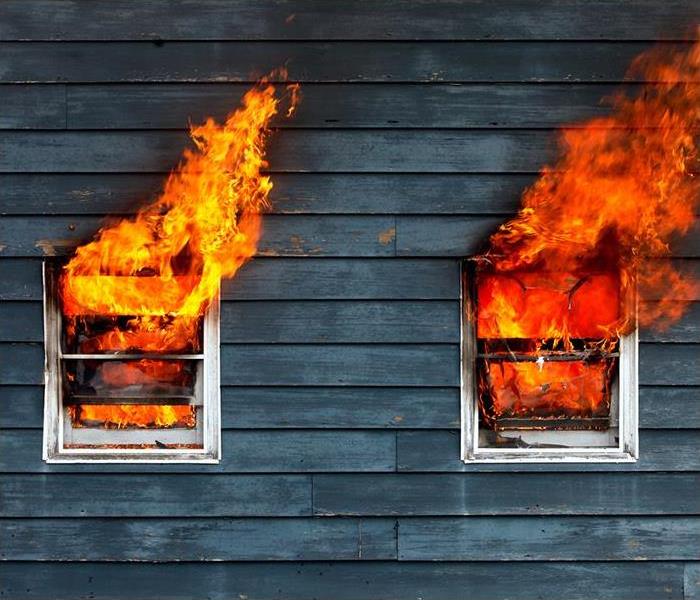 Dealing with insurance after a fire can be just as stressful as the fire itself. Make sure you know what your policy covers and prepare beforehand.
Dealing with insurance after a fire can be just as stressful as the fire itself. Make sure you know what your policy covers and prepare beforehand.
Your biggest concern after a fire is probably getting things back to normal at your home. You may not have the funds to make the repairs yourself. Most homeowners insurance policies cover fire and smoke damage though. You won’t need separate fire damage insurance. With careful planning, you can make filing your insurance claim easier by following a few simple steps after the fire.
What a Standard Homeowners Policy Covers
Fire is one of the perils that a standard homeowners policy covers. It reimburses you for damage to your home’s structure and its contents. “Contents” refers to clothes, furniture, personal items like jewelry, sports equipment, and other items. The contents coverage usually equals 50 to 70 percent of the insurance coverage on the structure.
Stay Prepared
Before anything happens to your home, conduct a home inventory. Make a list of all of the major items you’d need to replace if a peril occurred and the cost to replace them. Store this list offsite at your office or in a safe deposit box.
Documenting the Damage
If a fire does occur, document the damages from smoke and fire. Also, document the losses of contents items. Use the home inventory you created to provide exact descriptions including serial numbers of items and the amount they cost.
Your insurance company will need specific information to file your claim. This information includes:
- the fire’s time and date,
- the type of loss,
- the damage location – address and rooms damaged,
- photos of the damage,
- any injuries that occurred,
- involved parties,
- the home’s condition,
- the specific damaged items with descriptions,
- necessary repairs, whether temporary or permanent,
- the police and fire reports.
Do this as quickly as possible so that you do not miss the claim filing deadline. Your insurer will likely respond, requesting more information. It will want estimates of the fire damage cost to repair before funding the work. This means you will need to obtain cleaning and repair estimates from a company like SERVPRO and share these with the insurance company to document the fire damage repair costs.
Keep Accurate and Complete Records
You and your insurance company will exchange many emails, letters, and documents during the claims process. Start a binder or folder that contains only items related to this.
Your homeowner's insurance should cover the damage to your home and its contents. Careful documentation makes it easier to obtain your reimbursement for the damages. If the insurance adjuster declares your home a total loss, then your policy should cover your home’s reconstruction. In most cases, your homeowner's policy is all the fire damage insurance you will need. If your insurance denies your claim, try hiring a public adjuster to obtain a second opinion on the fire damage cost that you can use to appeal the insurance company’s decision.
6 Fire Restoration Do's and Don'ts for Maitland Homeowners
9/6/2018 (Permalink)
 Some cleaning after a fire can be done yourself but the only way to ensure proper removal of soot is to contact a professional restoration company.
Some cleaning after a fire can be done yourself but the only way to ensure proper removal of soot is to contact a professional restoration company.
It is extremely common for Maitland homeowners to panic even after a fire making countless mistakes that can both put their safety at risk or make restoration more difficult and costly. Knowing what to do and what not to do beforehand can make you better prepared to handle the situation at hand and save you money and keep you safe as well. Here are some examples of what you should and should not do after a fire.
6 Fire Restoration Do's
1. Avoid soot particles from being embedded into your home's carpets and tracked throughout the rest of the property by limiting movement through your home.
2. Avoid soiling your home's upholstery, walls, and woodwork keeping your hands completely clean at all times. To make this easier, use disposable gloves and change them out multiple times throughout your cleaning process.
3. Prevent additional foul odors by removing your fridge from its electrical source and propping the refrigerator and freezer doors open. Also, remove perishable items from the refrigerator.
4. Wipe soot from metal surfaces and fixtures such as sink faucets and appliances.
5. Use a damp rag or cloth to remove soot from household plants.
6. Change HVAC filter, but leave system off until a trained professional can check the system.
6 Fire Restoration Don'ts
1. Don't attempt to wash any walls or painted surfaces without first contacting a professional fire restoration company.
2. Don't attempt to shampoo carpet, rugs, or upholstered furniture without first consulting a professional fire restoration company.
3. Don't attempt to clean any electrical appliances (TV sets, radios, etc.) that may have been close to fire, heat, or water without first consulting an authorized repair service.
4. Don't consume any food or beverages that may have been stored close to fire, heat, or water. There is a high probability that these items have been contaminated.
5. Don't turn on any ceiling fixtures if you suspect that your ceiling is wet. Wiring may also be wet or damaged and can cause electrical shock, and air movement may create secondary damage.
6. Don't send garments to the dry cleaner. Improper cleaning may set in smoke odor.
10 Orlando Fire Damage Facts for Homeowners
8/1/2018 (Permalink)
 Aside from flames and soot, additional damage in a fire disaster can also occur from firefighters cutting ventilation holes and spraying water.
Aside from flames and soot, additional damage in a fire disaster can also occur from firefighters cutting ventilation holes and spraying water.
While flames can cause the most visible damage to your Orlando property during a fire, smoke and soot are silent and sometimes invisible hazards that could cost lives. Water is also a reason for damage after a fire. Even firefighters themselves may cause some damage before they can completely put out a fire. Here are 10 important things to know about fires.
Fire Dangers
1. Most deaths in fire disasters are a result of smoke being inhaled, not from contact with the flames themselves. When avoiding flames from a fire, make sure to remove yourself from any areas with smoke as well.
2. Soot is a coating of fine, black dust created when wood, coal, or oil-based substances are burned. These carbon particles float into the air and settle anywhere. Inhaling soot can cause severe lung deficiencies or even death.
3. Other effects of soot inhalation that can occur are cancer and serious defects in newborns. Soot produces polycyclic aromatic hydrocarbons. These hydrocarbons are responsible for gene mutation for particular groups of genes.
Water’s Effect on Fire Damage
4. Certain types of fires can be successfully put out using water. It is important to make sure that after a fire is extinguished, all wet components of your home or business are completely dried. If moisture is allowed to remain, mold, mildew, and other consequences can grow and lead to further damage and loss. This is why SERVPRO of Winter Park provides industrial dehumidifiers and air movers to dry saturated carpets, padding, furniture, and any other wet items.
5. Orlando and the rest of Central Florida are known for high levels of humidity. Because of this, mold colonies can begin to grow just 48 hours after water damage occurs. The combination of fire, water, and mold damage to your commercial property or home could result in a complete loss if not handled properly. See more about mold remediation here.
Firefighters Break Windows And Cut Holes
6. Firefighters often must break windows and cut holes in the roof of buildings on fire. As a fire burns, the fire moves up and down and across, growing very fast. Firefighters break windows and cut holes in roofs to provide ventilation that slows the fire’s growth. Ventilation also helps get rid of dark smoke that makes it hard for firefighters to see where they’re going. The holes and broken windows help firefighters fight the fire more quickly. The bottom line is that breaking windows and cutting holes in roofs help save lives and property. Damage caused by these techniques should be repaired quickly and properly to avoid additional damage.
7. Firefighters will also cut holes in walls at times. This is not done for the purpose of ventilation. It’s done so the fire department is sure that the fire is completely out. Fire departments don’t want to risk leaving a fire that’s not visible but is still active inside the walls or in other hidden places.
8. If you have a fire, get a copy of the fire report. In most areas, a fire report is a public document. Ask for it at the fire department or fire marshal’s office. The fire report will help you with information that your insurance company and other official offices may request.
Fire Damage Restoration
9. If soot contaminates items in your home or business, an Orlando fire damage restoration service provider like SERVPRO of Winter Park must assess the damage to see if restoration is possible. A professional company can properly assess the damage, provide closer estimates for the cost of repairs, work closely with your insurance company, and ensure that damage is restored properly.
10. Use caution if you decide to do some of the cleanups after a fire. Never start your cleaning process until you’ve attained the proper safety attire. Wear heavy-duty gloves, safety goggles, and a face mask. Carefully cover your nose and make sure your safety glasses have no place for dust or soot to get into your eyes.
Here To Help
Our team has specialized training and experience in fire restoration services and natural disaster cleanup in Orlando and the surrounding areas.
Call SERVPRO of Winter Park at (407) 678-5391 anytime, 24/7.
Cleaning Different Types of Smoke and Soot in Winter Park
6/15/2018 (Permalink)
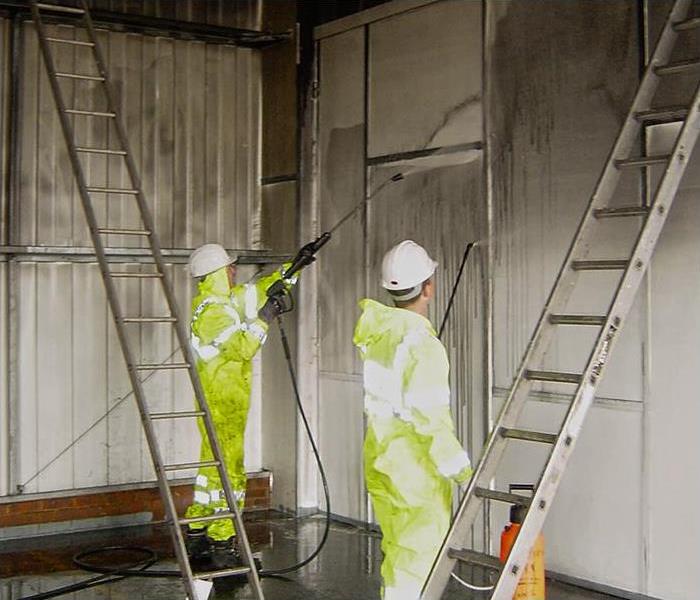 Soot caused by dry smoke can be removed with dry sponges and cleaned with water-based chemicals.
Soot caused by dry smoke can be removed with dry sponges and cleaned with water-based chemicals.
When a fire occurs in your Winter Park home, the heat and flames are not the only fire damage causing problems to be concerned about. Smoke generated from the blaze burning structural materials and other components can travel throughout an entire home and ruin its contents. Residue from the smoke can permanently stain contents and building materials requiring them to be replaced. In some cases, it is possible to salvage contents and materials by cleaning and removing soot residues. The level of difficulty for doing so is contingent on the type of soot that is present in the property following the fire.
Wet Smoke Versus Dry Smoke
The length of time and overall cleanability of soot strongly depends on how wet or dry the smoke that caused the damage was. Dry smoke is a result of the blaze burning natural materials quickly and with a significant supply of oxygen. Wet moke occurs when a fire burns synthetic materials at a slow pace with very little oxygen. It is extremely common for a fire to create both types of smoke while burning.
The easiest soot to clean is caused by dry smoke. SERVPRO of Winter Park uses dry sponges to wipe dry soot off and also can clean it using water-based chemicals. As an additional step, it is very helpful to vacuum carpets and fabrics to remove loose soot and debris. Removing soot from smoke that is too wet, requires much more aggressive cleaning methods that can be extremely difficult or even impossible in some cases.
Smoke Damage from Protein Fires
A large percentage of kitchen fires have a protein fuel source. Protein types of fuels that are commonly burned as a source include meat, poultry, and fish. These proteins produce smoke that leaves behind a residue, which is usually yellow or amber in color. These residues create a foul odor and must be fully cleaned in order for the smell to be removed. Some of this residue cannot be seen but will still cause a foul odor. Therefore, it is necessary to clean the property thoroughly in order to remove the odor completely.
Smoke Damage Cleaning and Odor Removal Services
If you have experienced a fire in your property, SERVPRO of Winter Park is a professional fire restoration company that can help you restore your property, clean soot, and remove odor caused by smoke. We work closely with you and your insurance adjuster to make this stressful situation as smooth as possible. Give us a call 24/7 at 407-678-5391 to get started!
Working with Insurance Adjusters After a Fire
5/22/2018 (Permalink)
 Taking photos of the damage during an inspection helps for building an estimate and even providing documentation to your adjuster.
Taking photos of the damage during an inspection helps for building an estimate and even providing documentation to your adjuster.
Experiencing a fire in your Winter Park home is a possibility that no homeowner wants to consider, however, it is a possibility that occurs more frequently than you may think. There are many causes of fires and they can occur any day, without warning, and cause an overwhelming amount of damage and prolonged effects on your property. Aside from the stress of dealing with a fire itself, the aftermath and process of restoring your property can be equally stressful as well.
The Process with Your Insurance Adjuster
SERVPRO of Winter Park knows how stressful these situations can be and works to make the fire damage restoration process as smooth as possible. Not only do we work to communicate clearly and constantly with you throughout the actual restoration process, but we also communicate with your insurance company and adjuster to help determine which areas of your property require professional restoration services and what items are a loss. Our team works closely with you and your adjuster to make the right determinations and provide the necessary information to get your claim going as quickly as possible.
Fast and Comprehensive Estimate
Working quickly and accurately to provide you and your adjuster with an estimate plays a crucial part in expediting the process of your claim. Our team inspects all of the damage to your home, visible and nonvisible, in order to determine the best course of action for restoration and the amount of equipment, personnel, and time needed to complete the project.
Fire Damage Restoration Process
Once your claims are filed and you are covered by your insurance company, our fire restoration team can get started with the fire damage restoration process and work to get your property restored and functional once again. The length of this process can fluctuate based on the severity of the fire and components affected.
Our crew works diligently to make sure the appropriate measures get taken to overcome all of the damage that your home experienced from the recent fire. If you are facing fire damages in your home, you can trust SERVPRO of Winter Park’s professional team to help you get going in the right direction. Give us a call at any time or day at (407) 678-5391.
Types of Fires and How They Are Extinguished
4/25/2018 (Permalink)
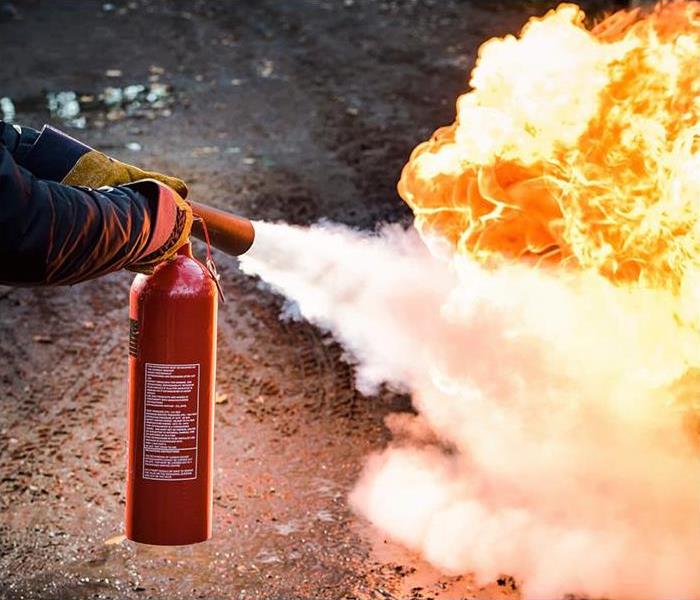 Knowing the type of fire you are trying to extinguish is essential for safely attempting to put it out and can help avoid making the fire worse.
Knowing the type of fire you are trying to extinguish is essential for safely attempting to put it out and can help avoid making the fire worse.
According to the U.S. Fire Administration, there were approximately 1,345,500 fires nationwide in 2015. As a homeowner or property manager, being aware of the different types of fires and how they are extinguished can help you to quickly resolve a fire incident, avoid making it worse, and even determine when the risks are too high for any attempt at extinguishing the flames. In the event of any fire, your safety and health should be your number one priority at all times. If you are concerned about your safety at any point, vacate the property, keep a safe distance, and wait for your local fire department to arrive. The types of fires are generally split into the 5 classes listed below.
Class A - Ordinary Combustible Fires
This common type of fire happens when materials are heated to their ignition temperature. Heat, oxygen, and fuel will allow a combustible fire to continue burning. Rubber, plastic, textiles, wood, paper and organic carbon-based compounds are a few of the materials that can be involved in these types of fires.
Combustible fires are usually the most simple to extinguish since spraying with water will cool the flames and source material. By removing the supply of heat, the fire is left without the essentials needed to burn. A water-based or foam based fire extinguish is recommended for Class A fires.
Class B - Flammable Liquids
Any liquid substance that has an ignition temperature below 100°C is classified as a flammable liquid. These liquids burn easily due to having a low flashpoint ( the temperature of a substance where enough vapor to be ignited is released). If a spark, flame, or any other source of ignition is applied to a flammable liquid, they can burn at any temperature. Types of flammable liquids include, but are not limited to, petrol, kerosene, alcohol, solvents, and paints.
When attempting to extinguish a Class B fire, it is important that you DO NOT use water to put the fire out. Splashing water can cause the flammable liquid to spread, spreading the fire along with it. Instead, smother the flames using a foam extinguisher. It is also important to note that Class B fires produce a thick and black toxic smoke, so avoiding the fire and waiting for the professionals may be the best route.
Class C - Flammable Gases
Butane, propane, and petroleum are a few flammable gases that have the potential for creating explosions if triggered by a spark. These fires are amongst the most dangerous and only need about a 5% concentration of flammable gas in the air to burn.
These fires should always be left to your fire department. Once on scene, they will have to isolate the fire’s gas supply and then use dry powder extinguishers. Most other extinguishers are ineffective against Class C Fires.
Class D - Metal Fires
Metals are good conductors and most require a lot of heat to ignite. Certain types of metals can burn if ignited. Metal shavings and powders pose a higher fire risk than solid masses of metal. Alkali metals such as potassium, magnesium, and sodium can burn when in contact with air and water. Therefore, spraying water or foam onto metal fires will increase the intensity of the flames and can potentially cause explosive reactions sending pieces of burning metal in all directions.
When dealing with a Class D fire, the safest approach is usually to allow the fire to burn out on its own. These type of fires tend to occur in industrial properties with large amounts of burning metal and an increased chance of explosions. Class D fires have a tendency for producing large amounts of ash, which builds up and starves the fire’s supply of oxygen. For metal fires that are spotted early, special type D powder fire extinguishers can be effective. Just make sure to check that they are the specific dry powder type intended for use on metal fires.
Electrical Fires
Electrical fires do not have a class of their own and are designated to Class C in the United States. However, they have their own fire safety requirements and are important to mention. These fires can be caused by short circuits, overloaded switchboards, faulty equipment and damaged wiring.
Before attempting to extinguish an electrical fire, it is important to isolate its electrical supply as quickly as possible. Water and foam are both conductors for electricity, so even after isolation, it is not safe to use them as extinguishers. The only types of extinguishers recommended for safely addressing electrical fires are carbon dioxide and dry powder fire extinguishers.
Class F - Cooking Oil Fires
Fires that involve cooking oil and fats are classified as Class F. These fires are common in homes, businesses and professional kitchens. They pose a very difficult challenge to extinguish, due to the high temperatures involved. Simply trying to cool the fire with water will not work. In fact, using water on a burning pan is likely to cause a rapid spreading out of the flames, making the fire worse and potentially injuring anyone in its vicinity.
For this reason, special fire extinguishers have been developed to address Class F fires. Wet chemical extinguishers contain a formula which cools the fire and then mixes with the oil to seal the surface and prevent re-ignition.
Fire Damage Restoration
SERVPRO of Winter Park does not extinguish fires. In case of a fire emergency, please contact your local emergency services and fire department for assistance. If you have suffered from fire damage to your property, give us a call at 407-678-5391. Our phone lines are open 24 hours to assist you and our skilled technicians can help you assess the extent of the damage to get the fire damage restoration process going.
6 Common Causes of Residential Fires
4/6/2018 (Permalink)
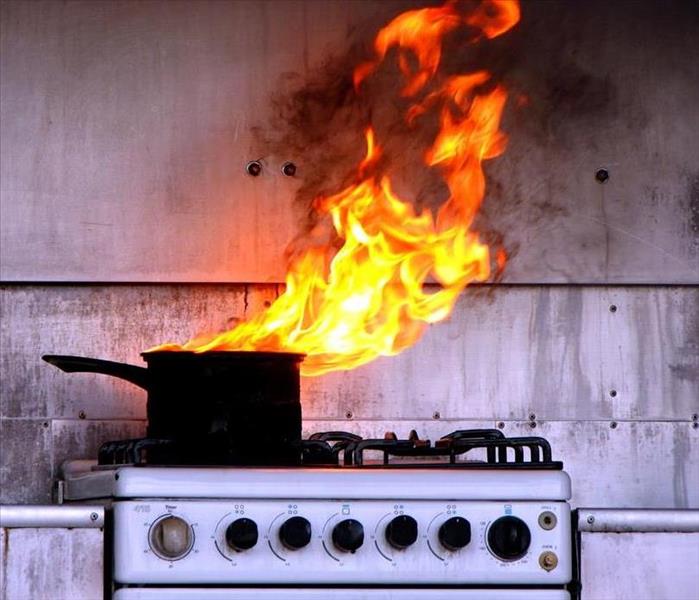 Fires related to cooking make up about 42% of all reported causes of residential fires in the U.S.
Fires related to cooking make up about 42% of all reported causes of residential fires in the U.S.
According to the NFPA (National Fire Protection Association) The United States averages between 350,000 and 400,000 fires every year. That translates to an average of 39 – 46 fires every hour! By knowing the most common ways a fire is started, a majority of these fires can be prevented.
Cooking Incidents
The leading cause of residential fires are incidents related to cooking. Cooking incidents actually make up about 42% of reported house fires in the country! For example, an oven or stove left on and unattended is a disaster waiting to strike.
Electrical
Electrical fires are another common type of home fires. One of the leading culprits is the over-use of extension cords. Extension cords are designed to safely pull a certain amount of amps, so make sure to read labels and know the limitations of the cord you are using. We recommend having an electrical inspection performed by a certified electrician at least once a year.
Unsupervised Children
Teaching children about fire safety is definitely something every parent should consider. It is extremely common for items such as lighter and matches to be left within reach of children who are not aware of the dangers of fire.
Smoking
Smoking is the source of many house fires and leads to almost 1,000 deaths a year. Lit cigarettes that have been left unattended, forgotten about can make contact with flammable items in your home and lead to a fire. Another common occurrence is smokers falling asleep while smoking in their home. We recommend not smoking in your home or quitting altogether, however, if you choose to smoke in your home you should always make sure to extinguish your cigarette.
Candles
Candles should never be left unattended but oftentimes are. When leaving a room with a burning candle make sure to blow it out or take it along with you if necessary. Forgotten candles are very dangerous and can quickly lead to a fire disaster.
Dryers
Dryers are all too often forgotten! It is important to remember to empty out your dryer vents and be certain that they are properly vented. Remember to maintain your dryer by cleaning the vents at least once a year.
When Disaster Strikes
There are many possible causes and contributors to residential fires. Being aware of the causes listed above will go a long way in helping to prevent fire damage or much worse in your home. In case of an emergency, please be sure to dial 911 to reach a local emergency responder. Also, keep in mind that SERVPRO of Winter Park performs excellent fire restoration services and is available 24/7 to take your call!
The Aftermath Of A Fire
10/10/2016 (Permalink)
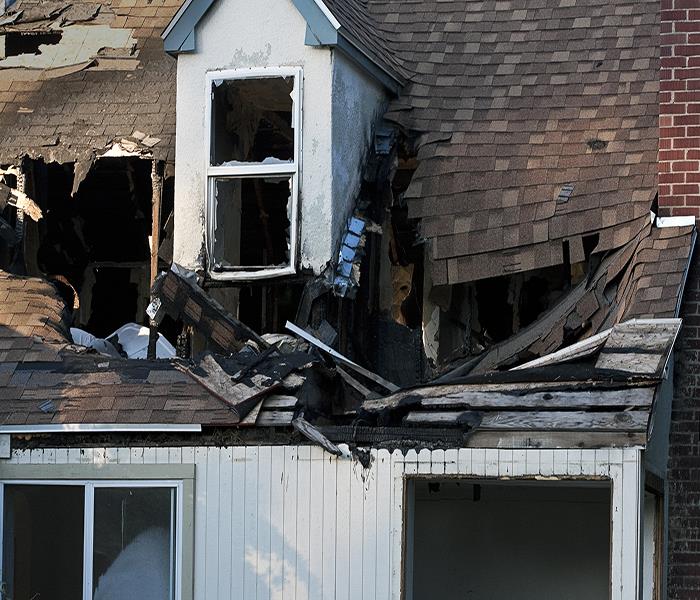 After a fire and after its flames are extinguished, there still exists some safety risks.
After a fire and after its flames are extinguished, there still exists some safety risks.
Fire Damage
After a devastating house fire, you are anxious to enter your home, but do not touch the carpets, draperies, upholstered furniture or clothing. They are likely covered with soot, which is oily, and it stains easily. Soot includes fine black particles, consisting mainly of carbon, as well as acids, chemicals, metals, soils and dust. Its removal should be handled by SERVPRO, professional fire remedial experts.
A common residential fire results in the burning of a variety of materials, from wood, paper, plastics, foams, fabrics, wool, wood products, synthetics and asbestos containing materials. Fire damage to Orlando residential and/or commercial buildings will result in soot contamination. Exposure to soot may occur via the eyes, skin, inhalation and ingestion.
Airborne soot particulates are invisible, thus after a fire you may unknowingly be affected. Soot particles can enter the bloodstream and cause a variety of health issues. Firefighters today are very well-trained in safety, plus they were protective gear, yet they experience a higher incidence of respiratory problems than the public.
After a fire and after its flames are extinguished, there still exists some safety risks. Soot is just one of the secondary fire residue risks, which cause damages. Not all soot residues are the same. There are different types of soot which are easier to clean than other types. SERVPRO professionals will clean any of four different types: dry smoke, wet smoke, protein smoke, and fuel oil smoke residues.
Industry issued safety equipment are essential in reducing possible exposure to dangerous soot conditions, including water related health problems from firefighting efforts. The fire restoration professionals at SERVPRO of Winter Park use IICRC professional tools and industry approved remediation methods. Our knowledge and expertise are at the heart of a thorough and safe fire restoration. Call us at (407) 678-5391 and let us help restore your property back to normal.
Cleaning Up Fire and Soot Damage
8/17/2016 (Permalink)
 Smoke Damage Degrades IAQ in Your Aloma Home
Smoke Damage Degrades IAQ in Your Aloma Home
Fire & Smoke Damage Cleanup is SERVPRO's Cornerstone Expertise
The term fire damage is actually a little inaccurate. The source of most damage to someone's home doesn't come from the fire itself. Most damage and the resulting replacement and restoration costs would come from smoke and soot unless it were a major incendiary event. In areas with large amounts of surrounding vegetation, like ours, the smoke damage to a home can come from blocks away.
Regardless if it comes from the surrounding area or if your home itself is the source of fire damage, an Aloma home can suffer thousands of dollars in damage after just a few minutes. SERVPRO has the equipment and the expertise to put homeowners and renters back into their residence as swiftly as possible.
Once damage does happen, our technicians are fully trained and certified under the guidelines of The Institute of Inspection Cleaning and Restoration Certification (IICRC) to restore your home to its original state. Our technicians also receive corporate and franchise level training. Local teams learn the latest procedures to clean carpets, furniture and surfaces of soot and to remove the smoke odor that can linger for weeks in an untreated home.
Our franchise maintains its set of commercial grade vacuums to remove soot and other residue. Our blowers and exhaust fans can be adapted to work from a large family room to a small laundry closet. We also maintain a very deep shelf of cleaning products specialized for every surface in a home from marble countertop cleaners to soaps and dry sponges that gently remove soot and not the paint underneath. Please note that whatever else you may do before help arrives, there is one thing you must NOT do once damage has happened, especially if you can already see soot. Do not turn on your HVAC unit, even if there is sweltering heat; not even the fan by itself. It's almost overpowering to want to clear the air, but if you do, you will blow even more soot throughout your home, even into areas that might not already be fire and smoke damaged. All filters have to be replaced first, and the registers in each room must be covered to prevent further contamination. We can use HEPA grade filtration systems, air scrubbers, and ozone machines to help improve the IAQ, indoor air quality.
SERVPRO of Winter Park is a locally owned franchise. All of us here are part of the community and have a vested interest in helping our neighbors. You are not just a paycheck to us. If you have fire damage or would like to schedule a free inspection to help prevent future damage, call us today at (407) 678-5391.
After A Devastating Fire Damage in Orlando - Steps to Take
3/18/2016 (Permalink)
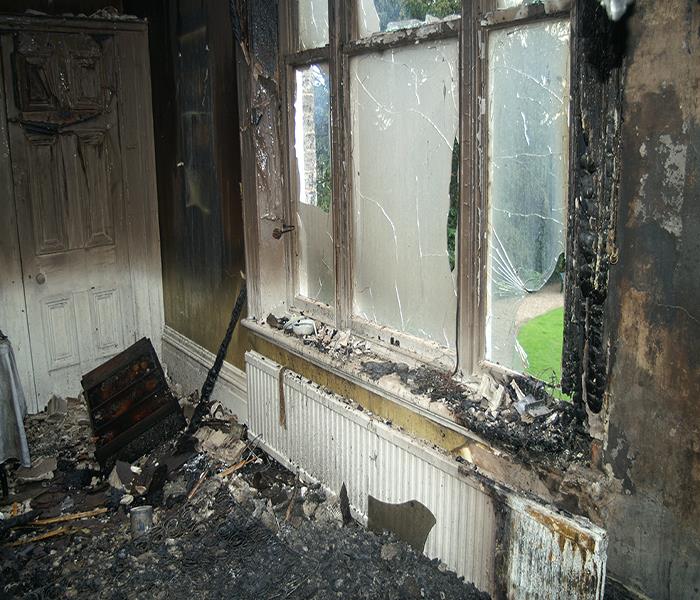 When a fire strikes, call a professional restoration company to help restore your home back to normal.
When a fire strikes, call a professional restoration company to help restore your home back to normal.
Fire Damage - Steps to Take After a Fire
When the devastating fire that ripped through your home is extinguished, and everyone is safe, you want to focus on measures you can take to minimize damage and reduce expenses for restoration. To do that follow these steps:
1. Clean all clothing to remove smoke or fire odors that could cause damage to the fabrics. Not to mention you can make them smell better. Clothes that are severely soiled from A damageing fire should be taken to a professional cleaner.
2. Thoroughly scrub all outside areas of your home with a strong disinfectant. These cleaners can help remove soot and harmful bacteria. Be sure to wear gloves and other safety equipment. Target all areas of your home such as floors, walkways, walls, glass, and screens.
3. Now you can move to the interior of your home. Cleaning inside includes scrubbing and disinfecting walls, cabinets, counters, tables, flooring, tables, chairs, and other areas. Remember to wear the same safety gear for interior projects.
4. Clean all of your fire damaged furniture in Orlando thoroughly. You do not want to damage sensitive material with harsh cleaners. Some furniture may need to be discarded if it is too badly damaged.
5. Next, restore fire damaged draperies and tapestries with an odor neutralizer spray. This spray helps combat the soot and fire damage that has penetrated deep into the fabrics. If your fire damage in Orlando is too much to handle on your own, consult a professional restoration expert.
6. Deodorize carpets and mattresses if possible. Steam cleaning could be considered as an option. Wash or dust all household items.
7. Finally, do not forget the importance of cleaning the ventilation systems in your home. The HVAC cleaning requires calling a fire damage restoration professional in Orlando. Heating/Cooling systems need all vents, ductwork, and filters thoroughly cleaned to ensure soot and smoke particles are not being cycled through the air in your home.
If you suffer fire damage , we respond to your needs day or night. We want to help and serve our community. For more information or an estimate call SERVPRO of Winter Park at (407) 678-5391.





 24/7 Emergency Service
24/7 Emergency Service




























